ENG:
Royal Castle
Continuing along Nowomiejska Street, the Old Town Market, and then Swietojanska Street, we arrive at Castle Square. On Castle Square there is the Royal Castle.
The origins of the Castle date back to the 14th century, the Great Tower was built, which was later rebuilt in the 16th and 17th centuries during the reign of Sigismund III Vasa into the shape of the current closed pentagon.
The castle served as a royal residence and was the site of parliamentary sessions. In addition, it was the administrative and cultural center of our country. During the wars that Sweden, it was destroyed in the mid-17th century. Then, in the 18th century, artists hired by King Augustus Stanislaw Poniatowski rebuilt the interior to create the Grand and Royal apartments.
In the 19th century during the partitions a large part of the works of art, was stolen and ended up in Russia, managed to recover most of them after independence.
In September 1939, with the start of World War II, the castle was bombed. On the other hand, in September 1944r. The castle was blown up by German troops.
The decision to rebuild was not obtained until 1970, when the communist authorities had less influence in our country. Funds for reconstruction were obtained thanks to donations from the local community.
PL:
Zamek Królewski
Idąc dalej ulicami Nowomiejską, Rynek Starego Miasta, a następnie Świętojańską dochodzimy do ulicy Plac Zamkowy. Na Placu Zamkowym znajduje się Zamek Królewski.
Początki Zamku sięgają XIV w. wybudowana została Wieża Wielka, którą następnie przebudowano w XVI i XVII w. za czasów panowania Zygmunta III Wazy w kształt obecnego, zamkniętego pięcioboku.
Zamek służył jako rezydencja królewska i był miejscem obrad sejmowych. Ponadto było to centrum administracyjne oraz kulturalne naszego kraju. Podczas wojen że Szwecją został zniszczony w połowie XVII w. Następnie w XVIII artyści zatrudnieni przez króla Augusta Stanisława Poniatowskiego przebudowali wnętrze tworząc apartamenty Wielki i Królewski.
W XIX w. podczas zaborów duża część dzieł sztuki, została wykradziona i znalazła się w Rosji, udało się odzyskać większość z nich po odzyskaniu niepodległości.
We wrześniu 1939r. wraz z rozpoczęciem II wojny światowej Zamek został zbombardowany. Natomiast we wrześniu 1944r. Zamek został wysadzony przez wojska niemieckie.
Decyzję o odbudowaniu udało się uzyskać dopiero w 1970r., kiedy komunistyczne władze miały już mniejsze wpływy w naszym kraju. Fundusze na odbudowę udało się uzyskać dzięki ofiarom społeczności lokalnej.
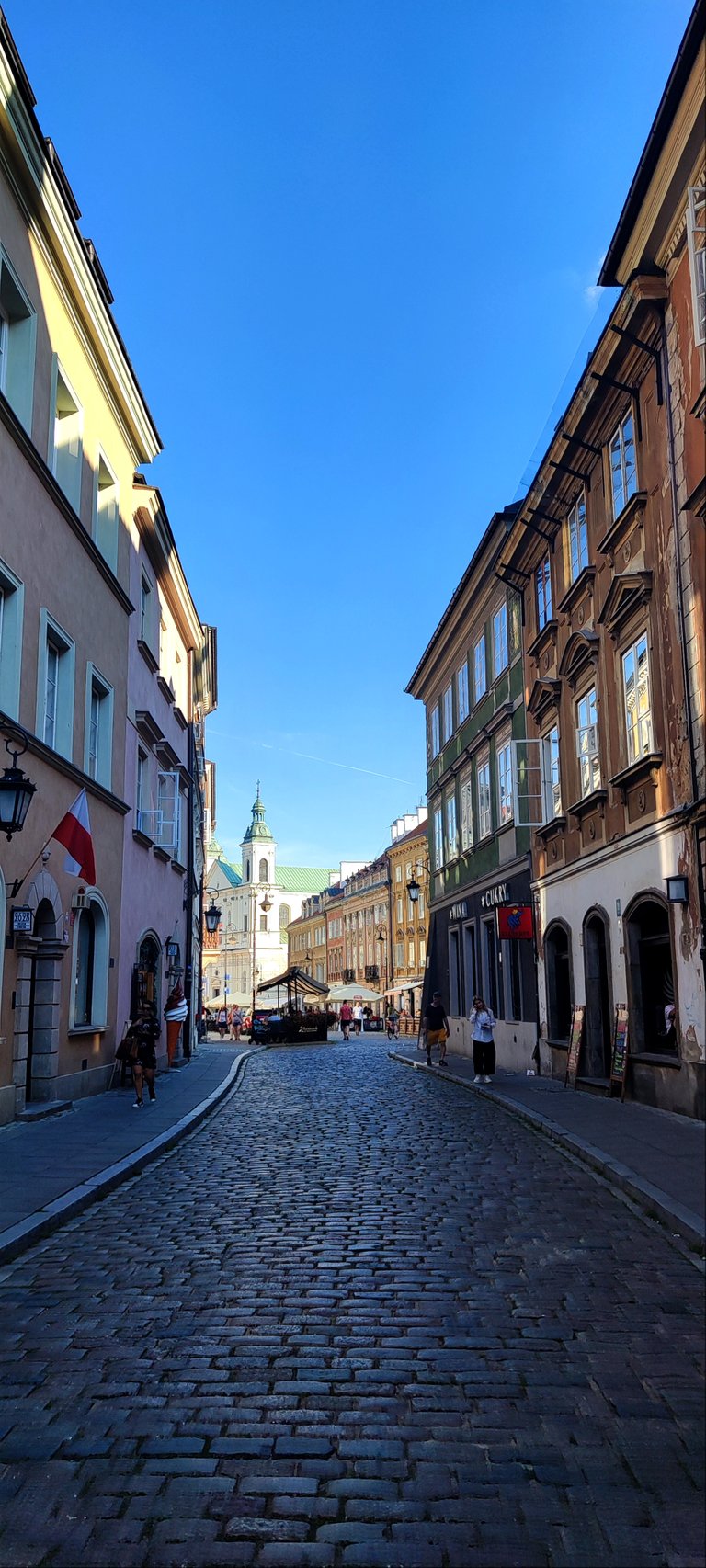
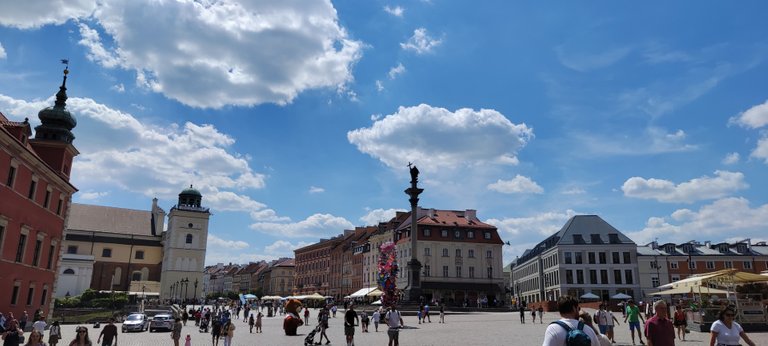
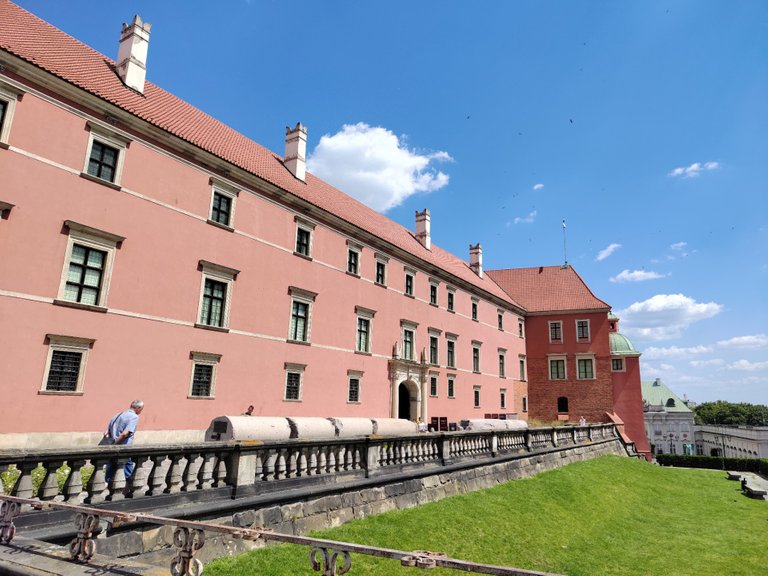
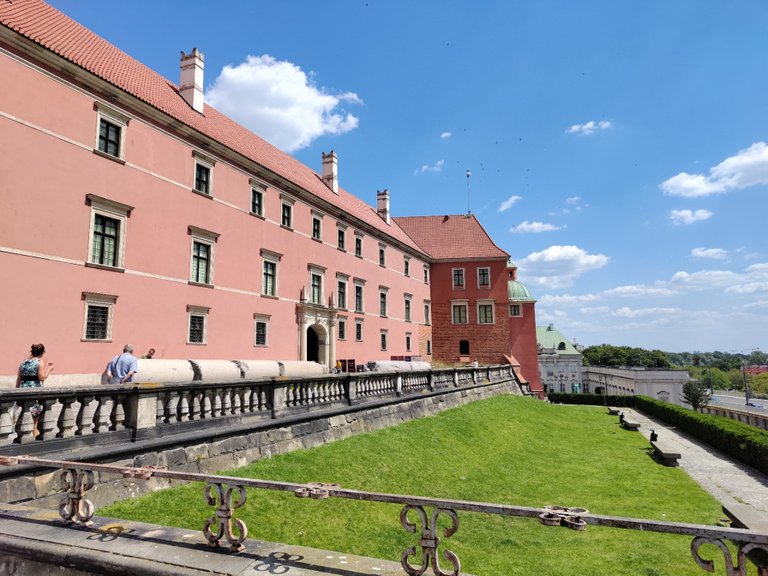
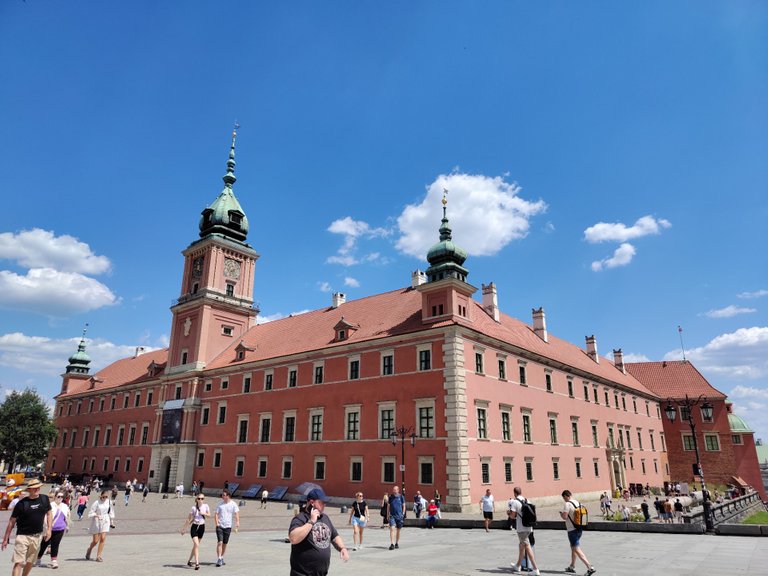
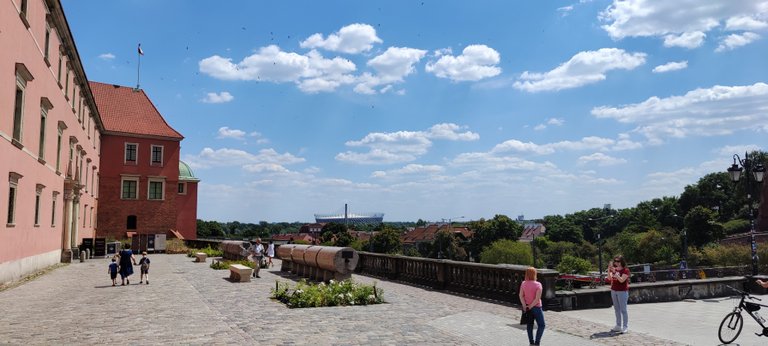
ENG:
You can also see the National Stadium from Castle Square. It was built for the 2012 European Football Championship. It officially opened on January 29, 2012. It has the 4th (highest) category in the UEFA classification. In addition to football events, it hosts various concerts. Stadium capacity for matches is 58580. Stadium capacity for concerts is 72900.
PL:
Z Placu Zamkowego można zobaczyć również Stadion Narodowy. Został wybudowany na piłkarskie Mistrzostwa Europy w 2012r. Oficjalnie otwarty 29 stycznia 2012r. Posiada 4. (najwyższą) kategorię w klasyfikacji UEFA. Prócz wydarzeń piłkarskich są na nim organizowane różnego rodzaju koncerty. Pojemność stadionu na mecze to 58580. Pojemność stadionu na koncerty to 72900.
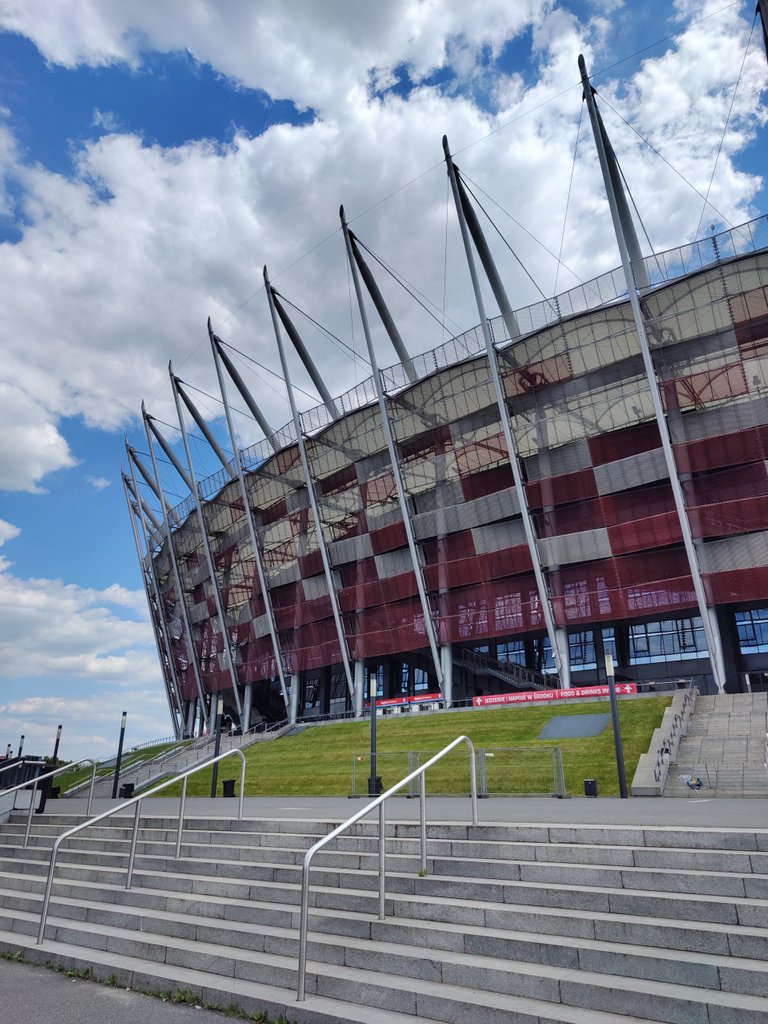
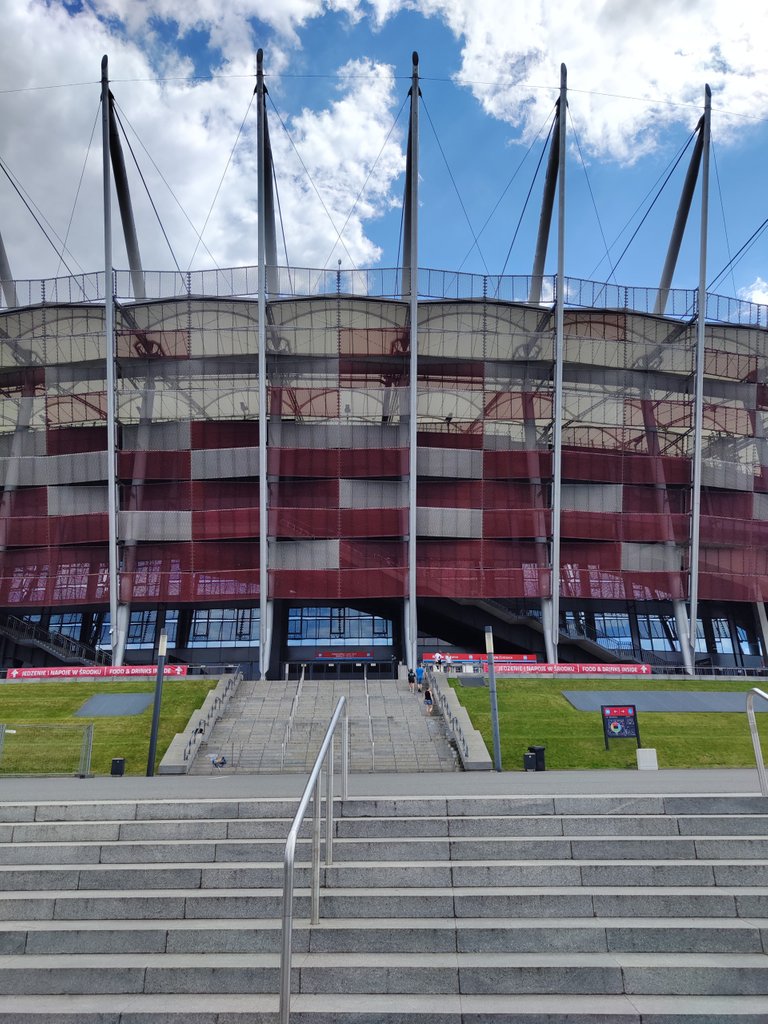

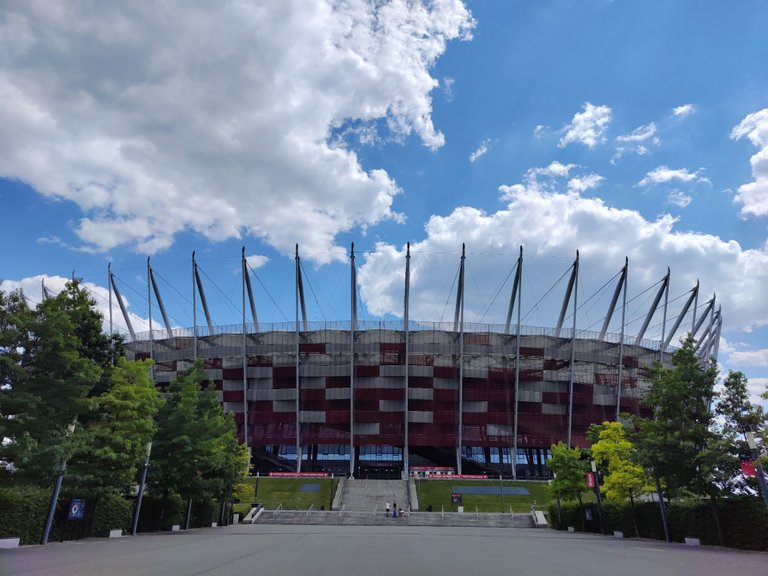
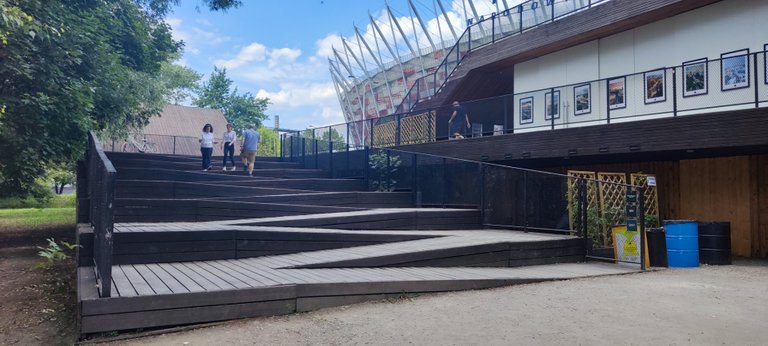
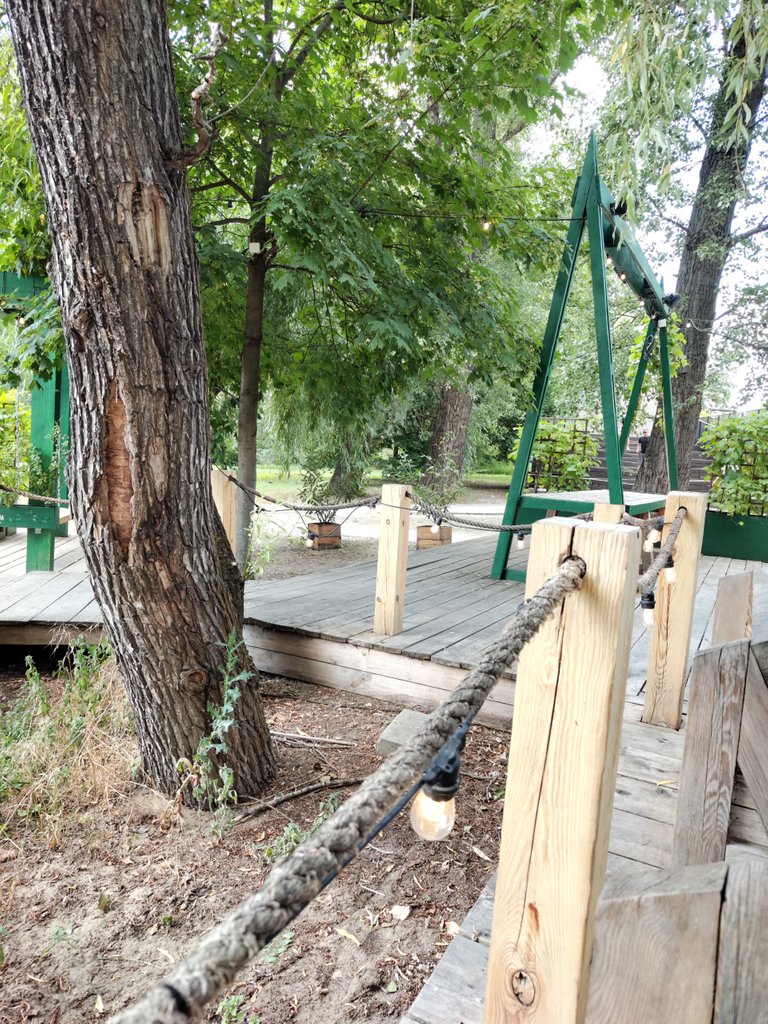

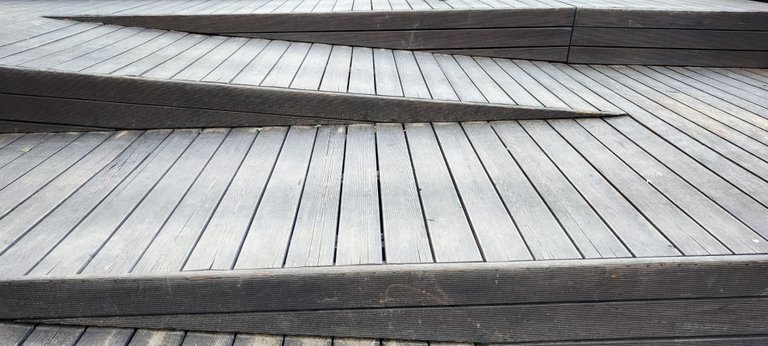

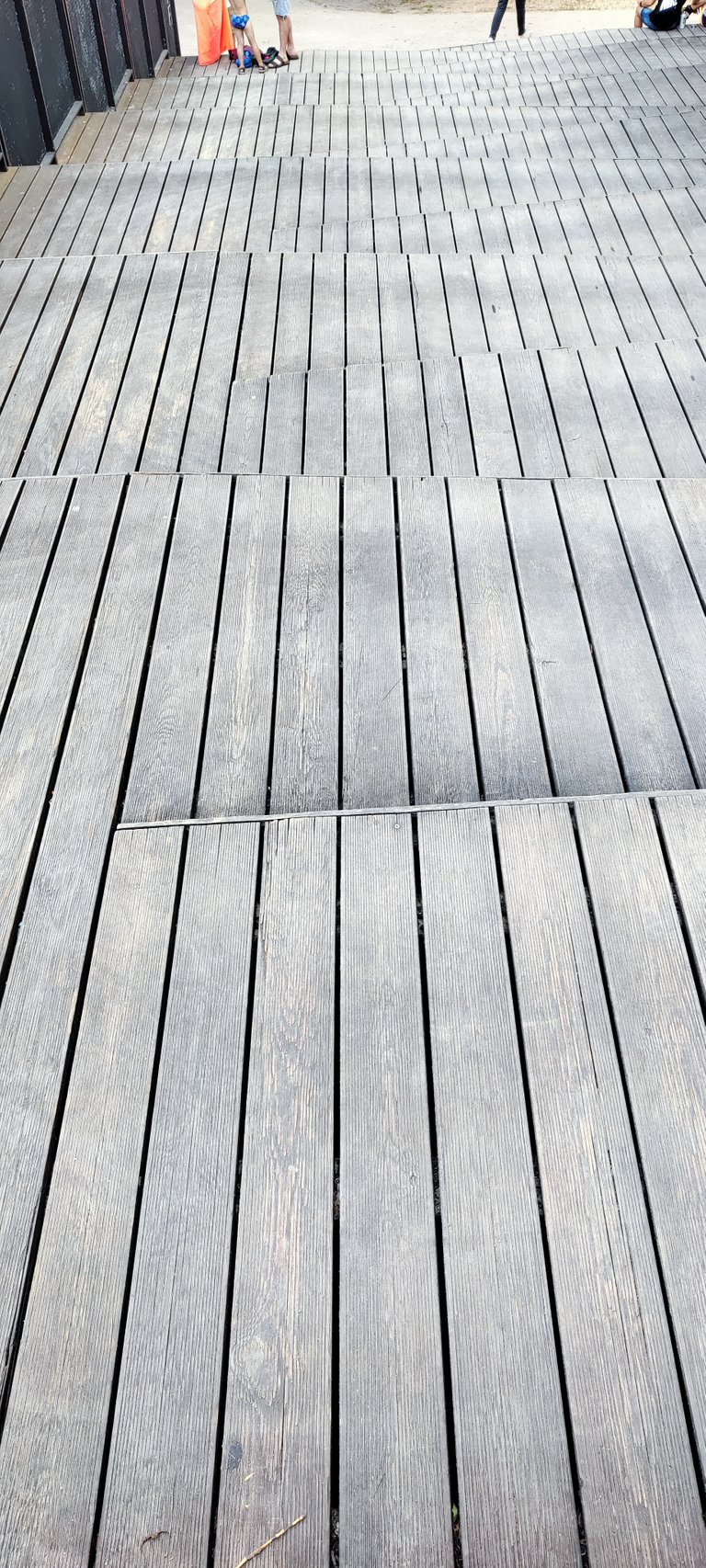
ENG:
Sigismund III Vasa Column - a monument to King Sigismund III Vasa. The monument was erected in 1643-1644.
PL:
Kolumna Zygmunta III Wazy – pomnik króla Zygmunta III Wazy. Monument został wzniesiony w latach 1643–1644r.
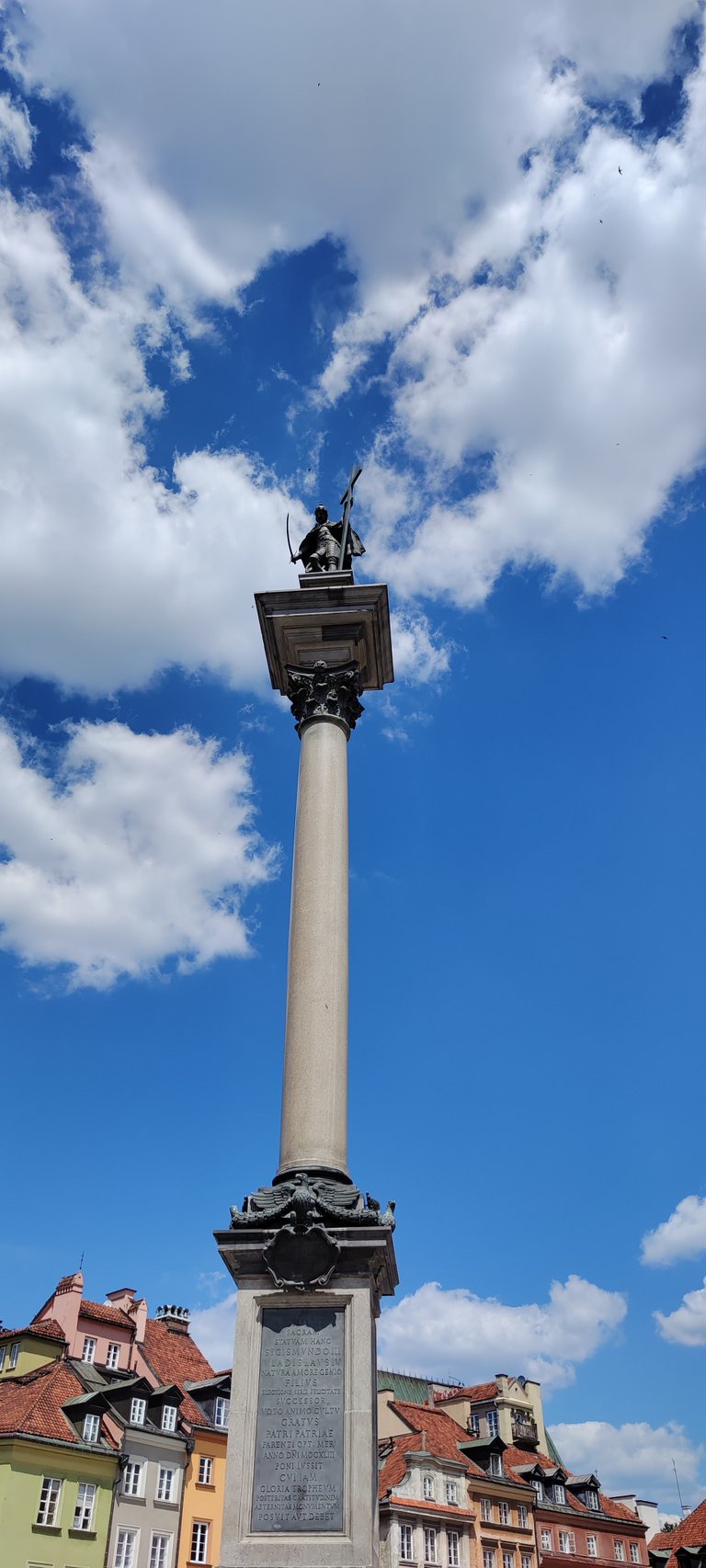

ENG:
Continuing along Krakowskie Przedmieście Street, we head towards the Presidential Palace. On the way, we pass the Adam Mickiewicz Square, where a monument to Adam Mickiewicz is erected. The monument was unveiled on December 24, 1898, the 100th anniversary of the poet's birth. The statue is 4.5 meters high and was cast in Italy. The column and pedestal are made of granite sourced from quarries in Baveno, Piedmont.
PL:
Idąc dalej ulicą Krakowskie Przedmieście kierujemy się pod Pałac Prezydencki. Po drodze przechodzimy przez Skwer Adama Mickiewicza na którym wzniesiony jest pomnik Adama Mickiewicza. Monument został odsłonięty 24 grudnia 1898, w setną rocznicę urodzin poety. Posąg ma 4,5 metra wysokości i został odlany we Włoszech. Kolumna i cokół są wykonane z granitu pochodzącego z kamieniołomów w Baveno w Piemoncie.
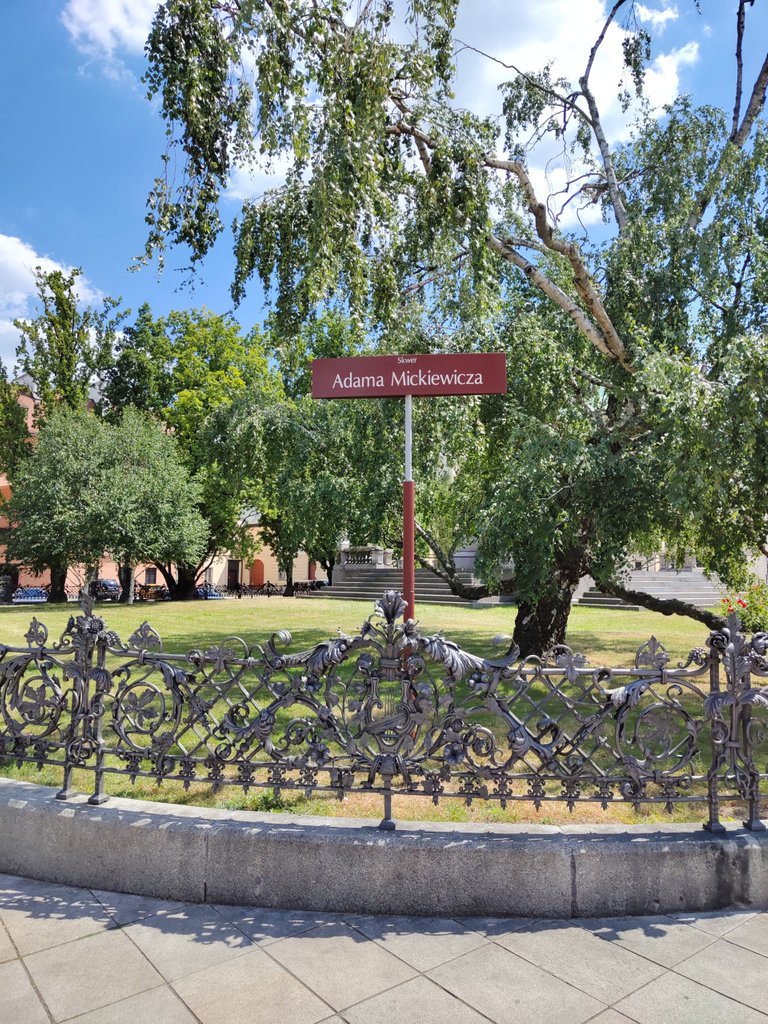
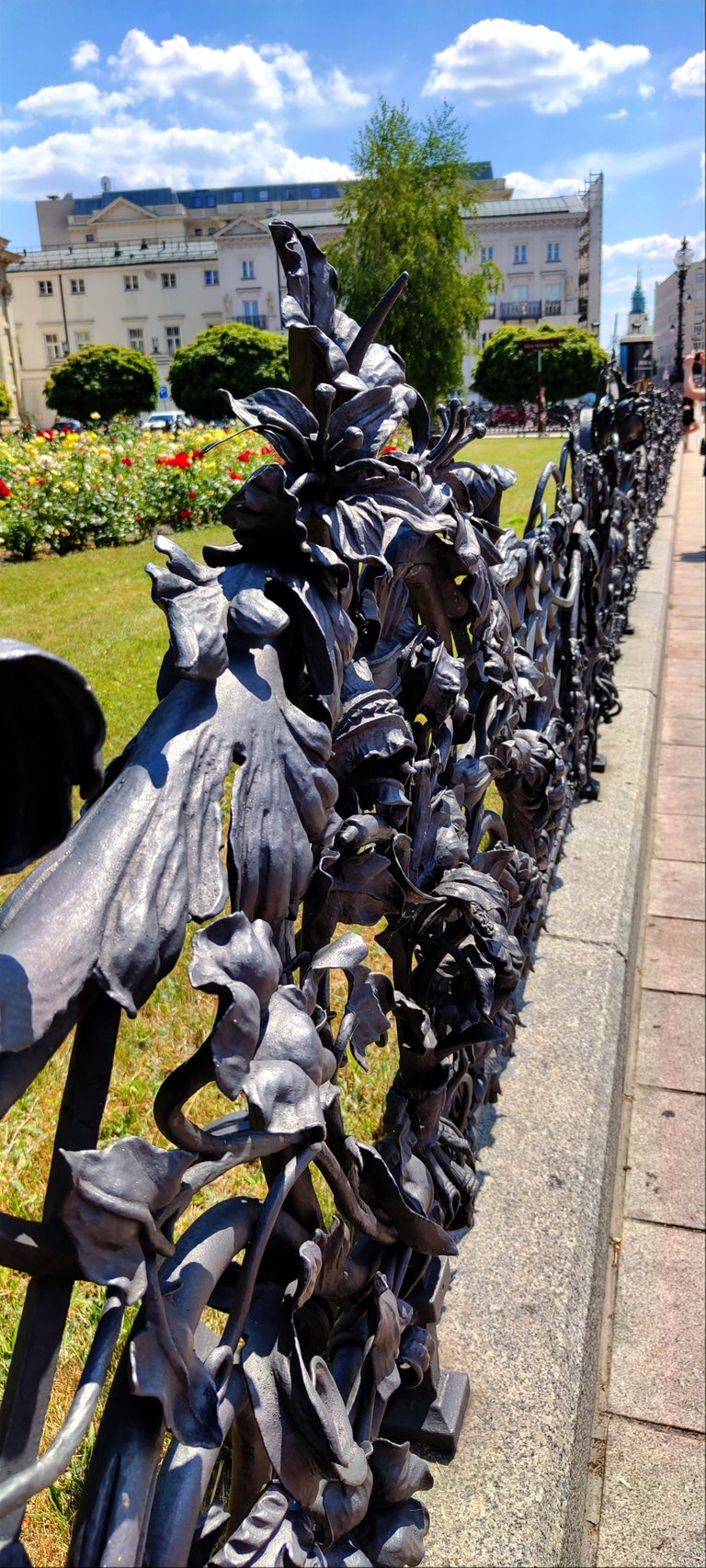


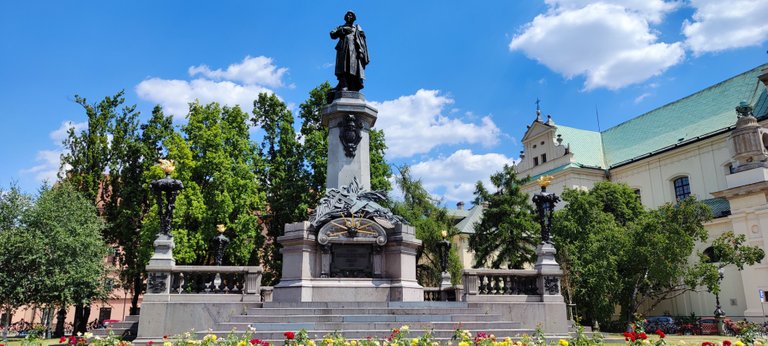
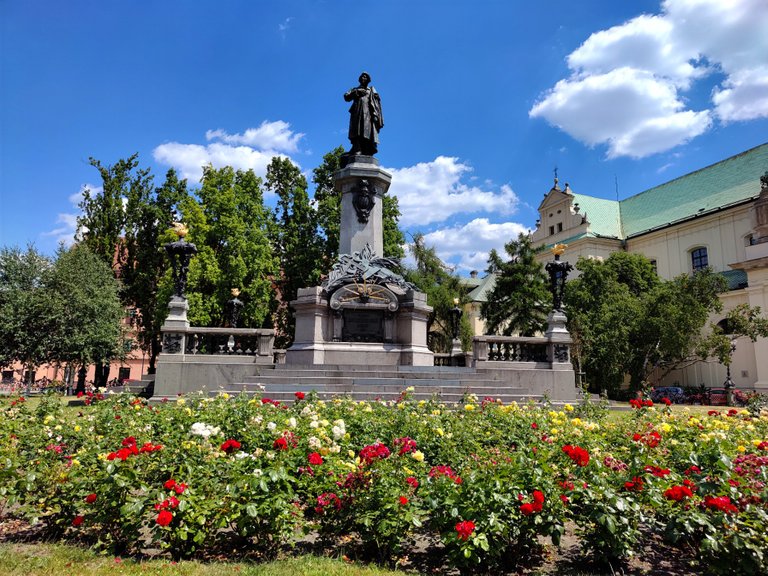
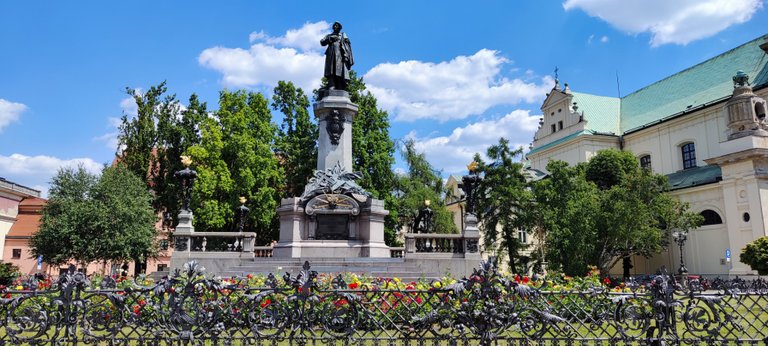
ENG:
Presidential Palace
The Presidential Palace is the largest palace in Warsaw. Construction began in 1643 on the orders of Grand Crown Hetman Stanislaw Koniecpolski. Constantino Tencalli, who was both the author of the aforementioned Sigismund's Column, was appointed as the architect. For hundreds of years, the Royal Palace witnessed many events. Including many storms and turmoil that swept through the Republic. After Hetman Stanislaw's death, his son Alexander sold it to Field Hetman and Grand Marshal of the Crown Jerzy Sebastian Lubomirski. During this period the Palace served as a venue for concerts, theatrical performances and lavish balls to which all Polish and Lithuanian magnates were invited. The owners expanded and beautified it more and more. A theater was established there, and King Stanislaw August Poniatowski had his own special lodge. The palace was also a venue for political debates - in 1791-1792, during the sessions of the Great Sejm. In 1818, at an organized concert in the palace, the then eight-year-old Frederic Chopin made his first public appearance. It was also in this year that it was decided to rebuild the palace in the classicist style, in which it has survived to the present day. In 1852, a fire almost completely destroyed the main body. Reconstruction continued until 1856, when a lavish party was held at the Palace for Tsar Alexander II. During World War II, the Palace was only slightly damaged, so reconstruction took a short time. Of the more important events that took place at the Presidential Palace, it is worth mentioning:
the signing of the Constitution of the Republic of Poland in 1997.
ratification of the act of Poland's accession to NATO in 1999.
The signing of the act of accession to the European Union in 2003.
Two sculptures of lions made by sculptor Camillo Laudini.
PL:
Pałac Prezydencki.
Pałac Prezydencki jest największym pałacem w Warszawie. Budowę rozpoczęto w 1643 r. na rozkaz hetmana wielkiego koronnego Stanisława Koniecpolskiego. Na architekta został wyznaczony Constantino Tencalli, który był zarówno autorem wspomnianej wcześniej Kolumny Zygmunta. Przez setki lat Pałac Królewski był świadkiem wielu wydarzeń. W tym wielu burz i zawieruch, jakie przetoczyły się przez Rzeczpospolitą. Po śmierci hetmana Stanisława jego syn Aleksander sprzedał go hetmanowi polnemu i marszałkowi wielkiemu koronnemu Jerzemu Sebastianowi Lubomirskiemu. W tym okresie Pałac służył jako miejsce organizowania koncertów, przedstawień teatralnych oraz hucznych bali, na które zapraszana była cała polska i litewska magnateria. Właściciele rozbudowywali go i upiększali coraz bardziej. Powstał w nim teatr, a swoją specjalną lożę miał król Stanisław August Poniatowski. Pałac był również miejscem debat politycznych - w latach 1791-1792, podczas obrad Sejmu Wielkiego. W 1818 roku na zorganizowanym koncercie w pałacu, po raz pierwszy wystąpił publicznie ośmioletni wówczas Fryderyk Chopin. W tym też roku postanowiono przebudować pałac na styl klasycystyczny, w którym przetrwał do dnia dzisiejszego. W roku 1852, w wyniku pożaru niemal zupełnie zniszczony został korpus główny. Odbudowa trwała do roku 1856, w którym to zorganizowano w Pałacu huczne przyjęcie dla cara Aleksandra II. Po odzyskaniu niepodległości w 1918 roku, pałac przejęty został przez władze polskie i przeznaczony na siedzibę Prezesa Rady Ministrów. Podczas II wojny światowej Pałac został tylko nieznacznie uszkodzony, więc odbudowa trwała krótko. Z ważniejszych wydarzeń, które odbyły się w Pałacu Prezydenckim warto wspomnieć o:
- podpisaniu Konstytucji Rzeczypospolitej Polskiej w 1997 r.
ratyfikacji aktu o przystąpieniu Polski do NATO w 1999 r.
podpisaniu aktu wstąpienia do Unii Europejskiej w 2003 r.
Dwie rzeźby lwów wykonane przez wyrzeźbione przez Camillo Laudiniego.
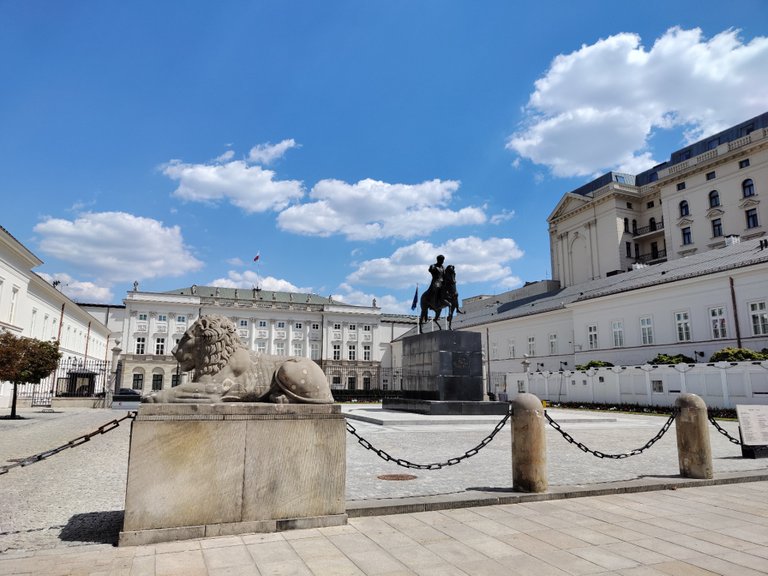
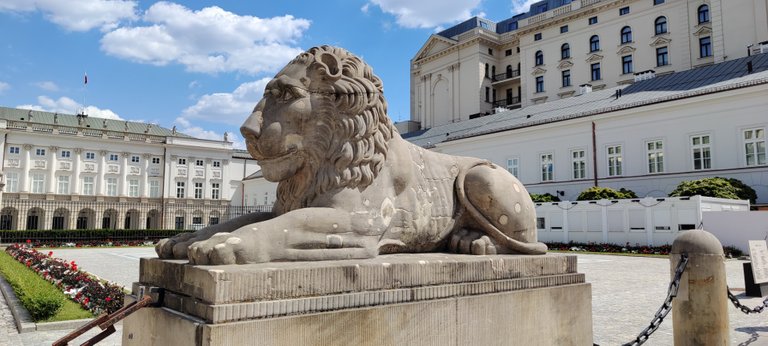
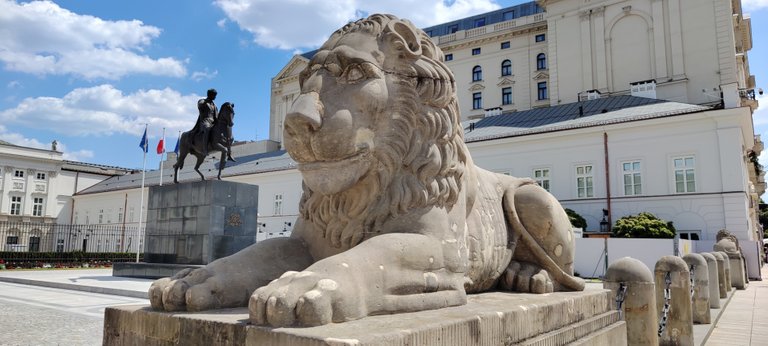
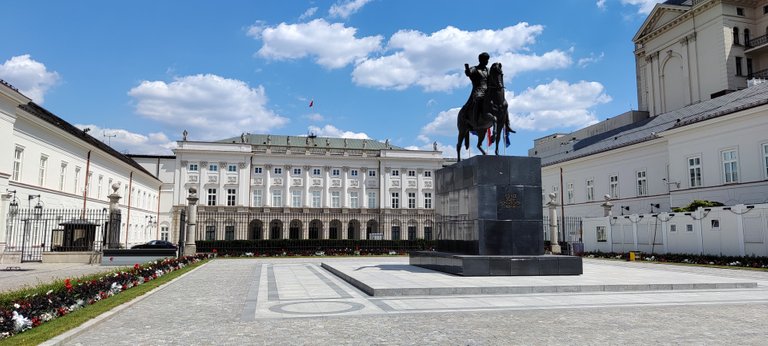
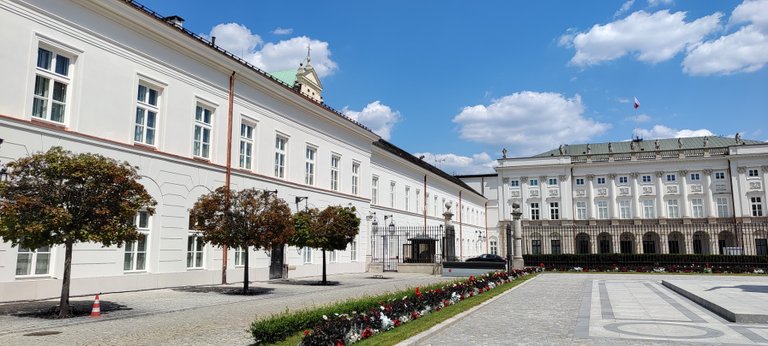
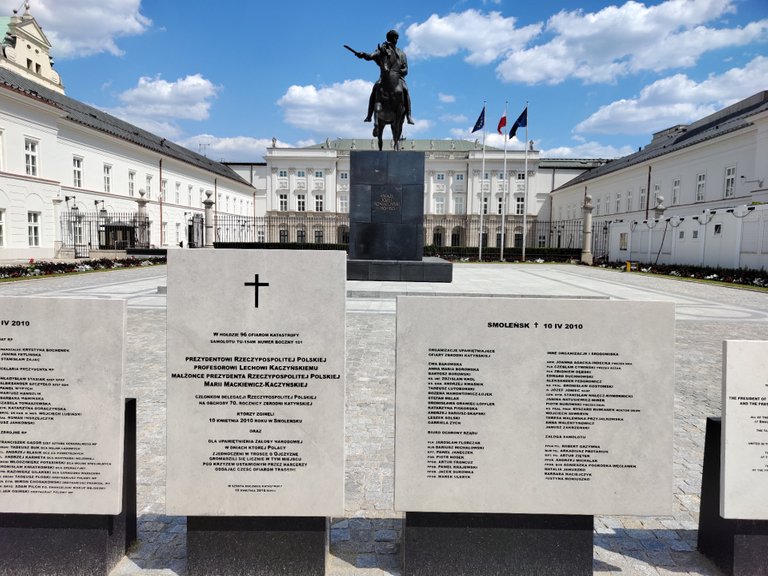
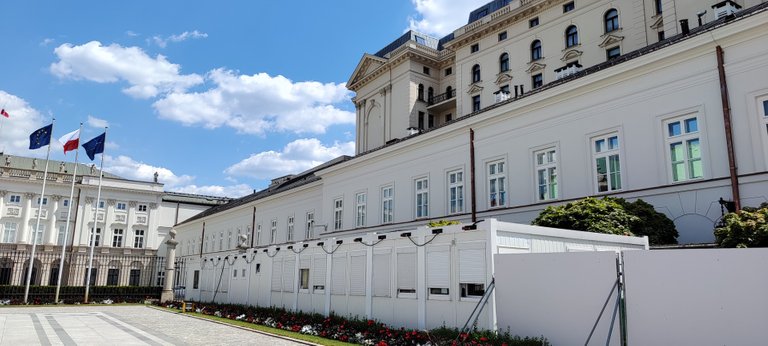
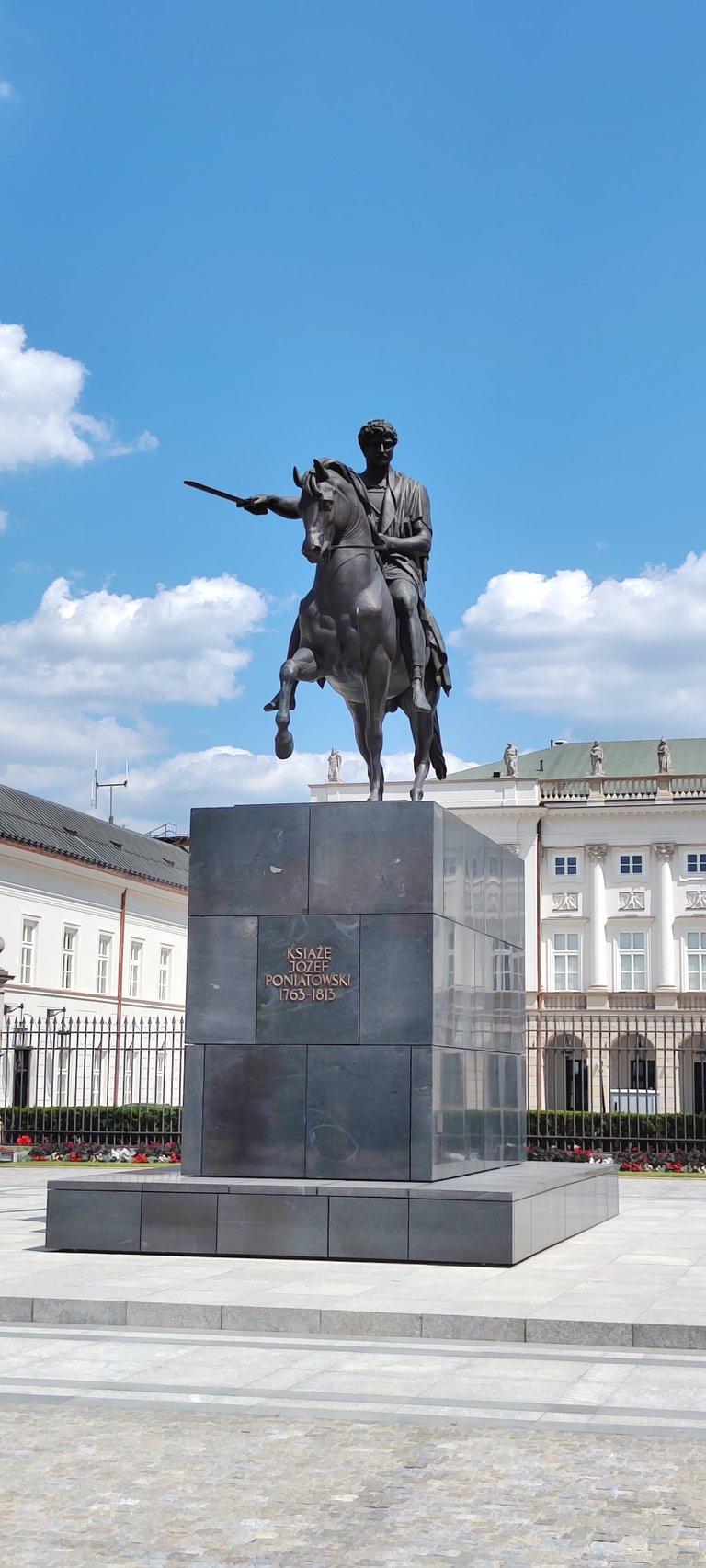
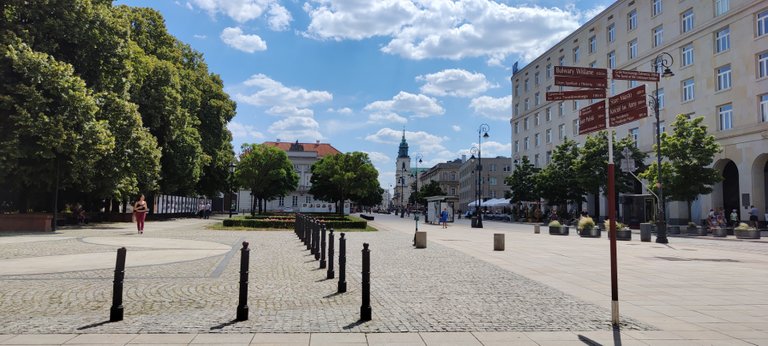
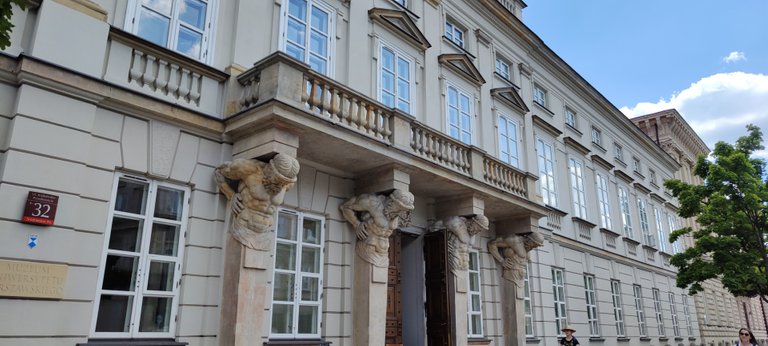
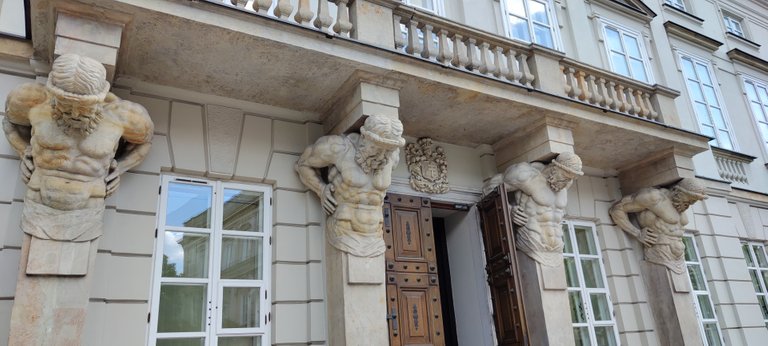

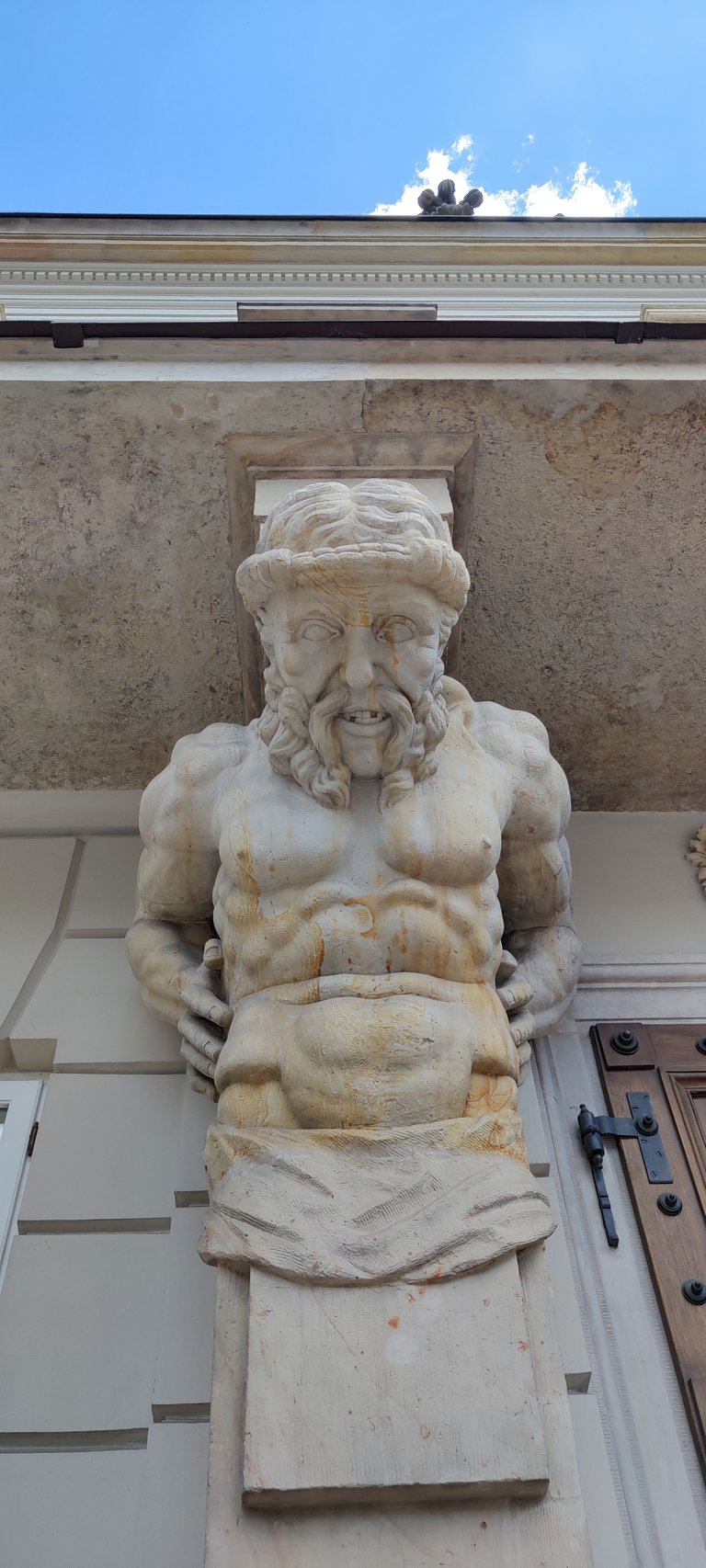
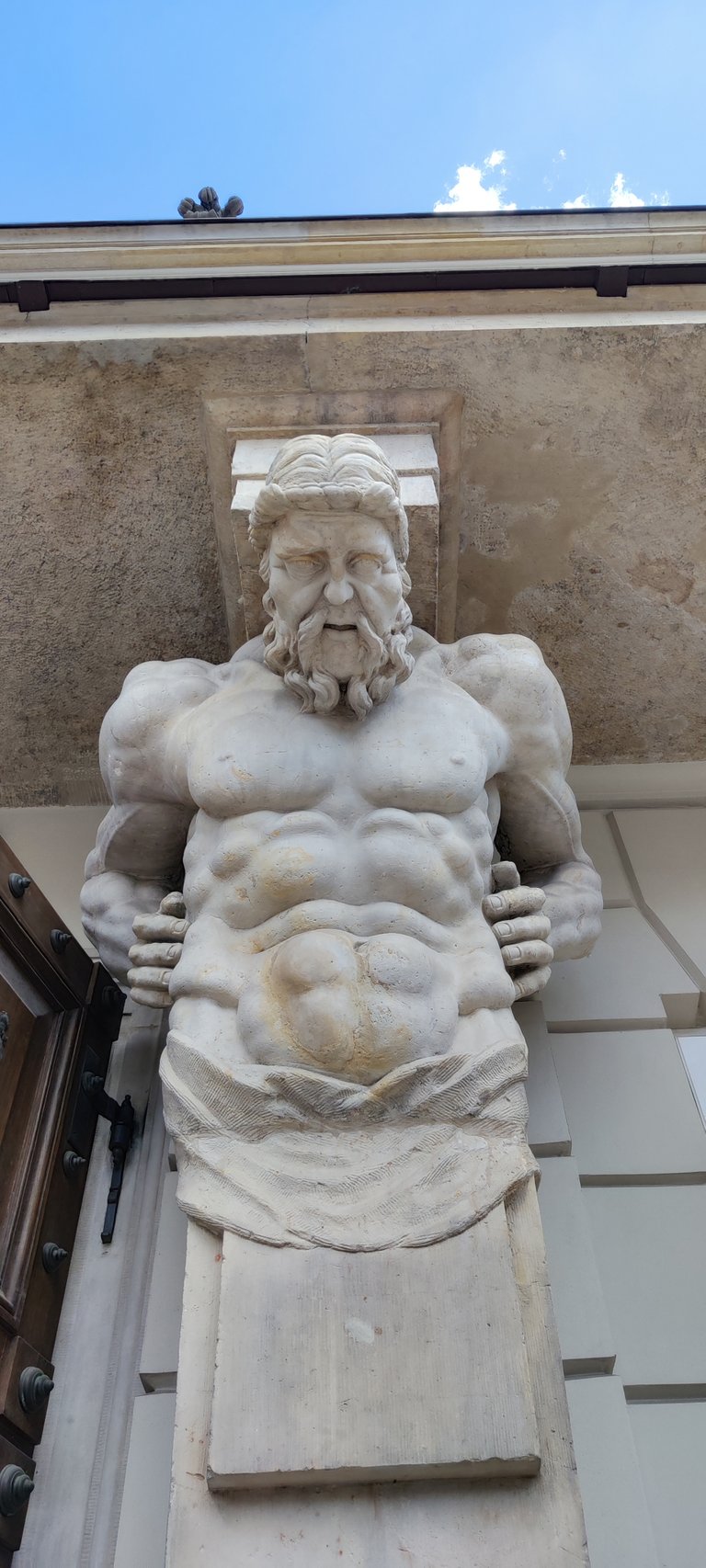
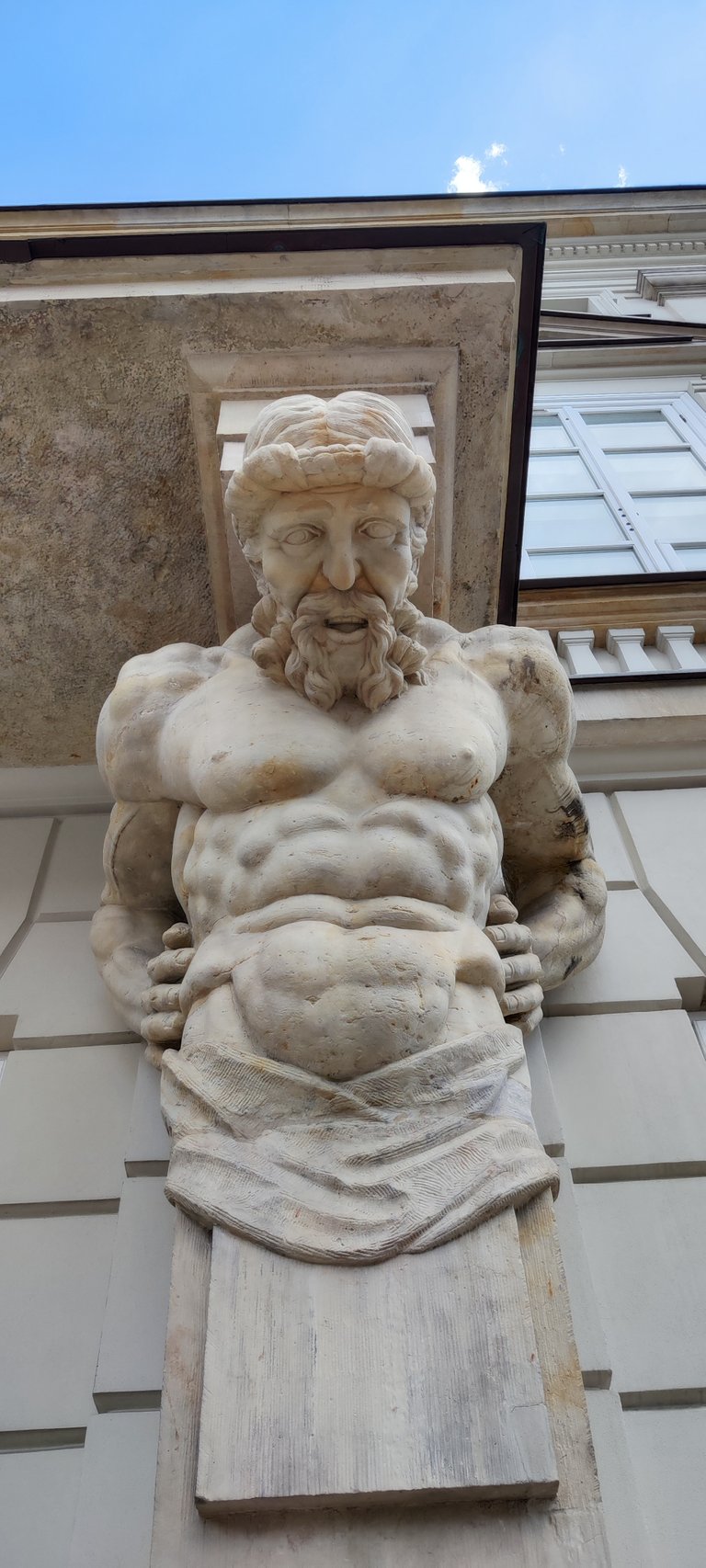
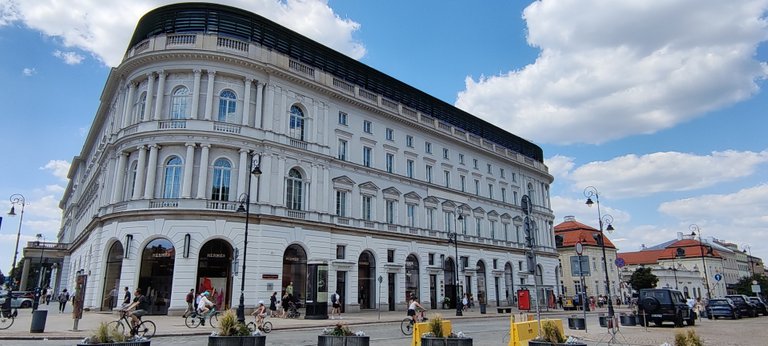
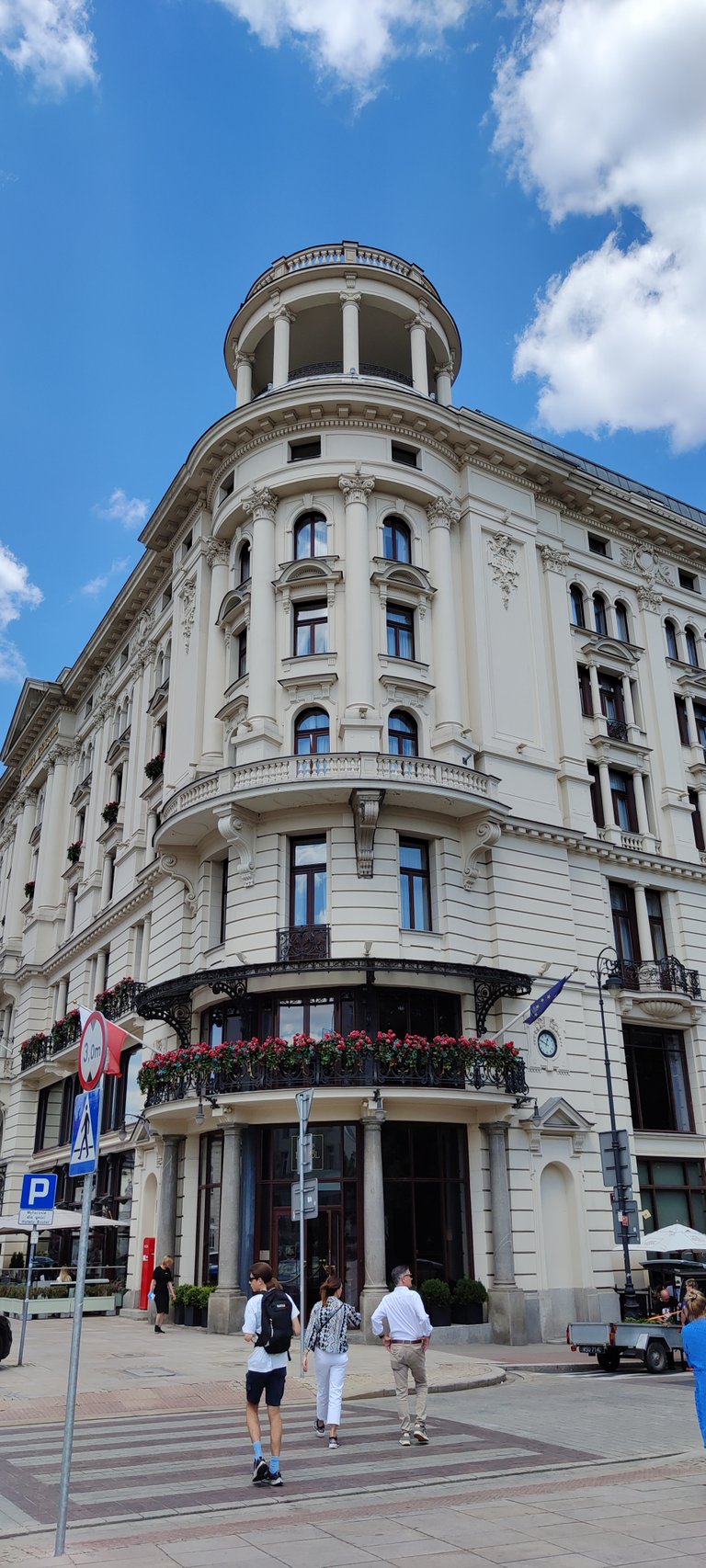
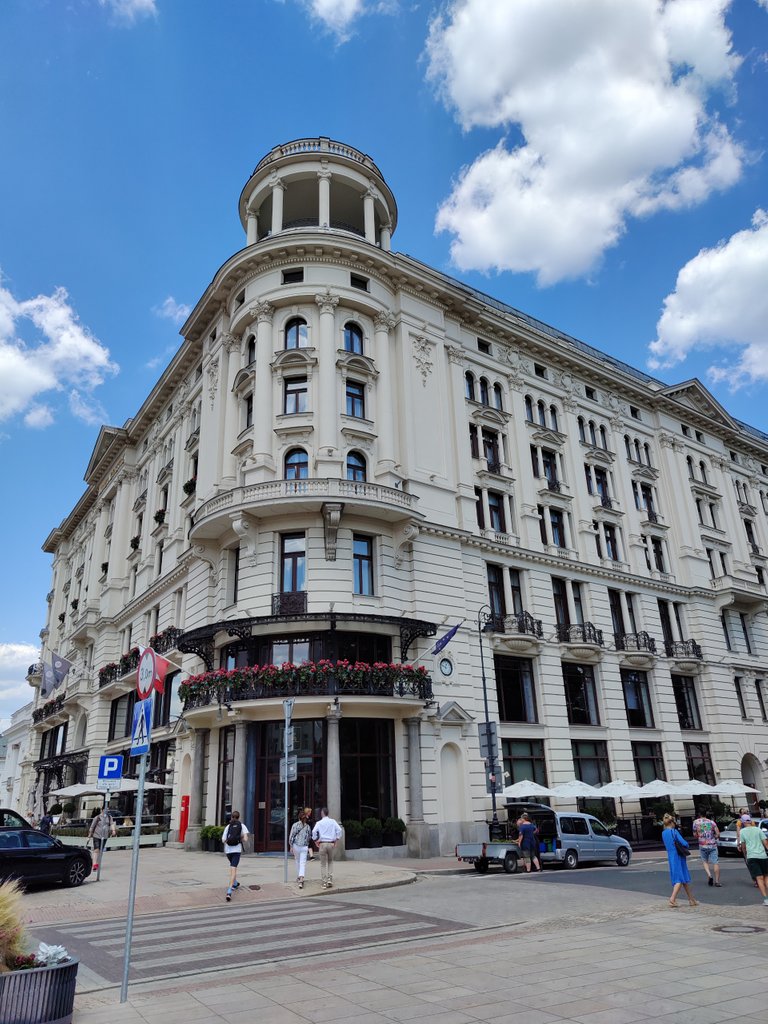
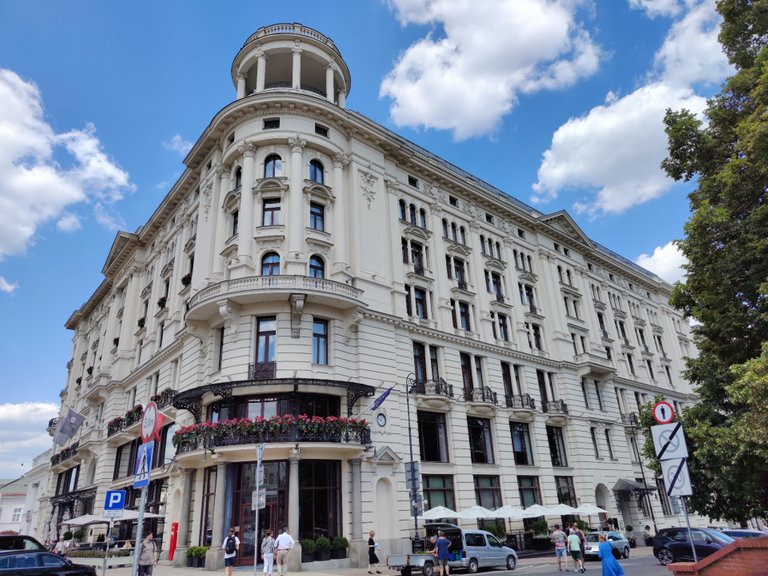
ENG:
Mikołaj Kopernik (1473-1543) Polish astronomer born in Torun, canon of Warmia. In his work "On the Revolutions of the Heavenly Spheres" he scientifically proved the heliocentric vision of the Universe. He defended the Olsztyn castle against the Teutonic Knights.
PL:
Mikołaj Kopernik (1473-1543) polski astronom urodzony w Toruniu, kanonik warmiński. W dziele „O obrotach sfer niebieskich” naukowo udowodnił heliocentryczną wizję Wszechświata. Bronił zamku Olsztyńskiego przed Krzyżakami.
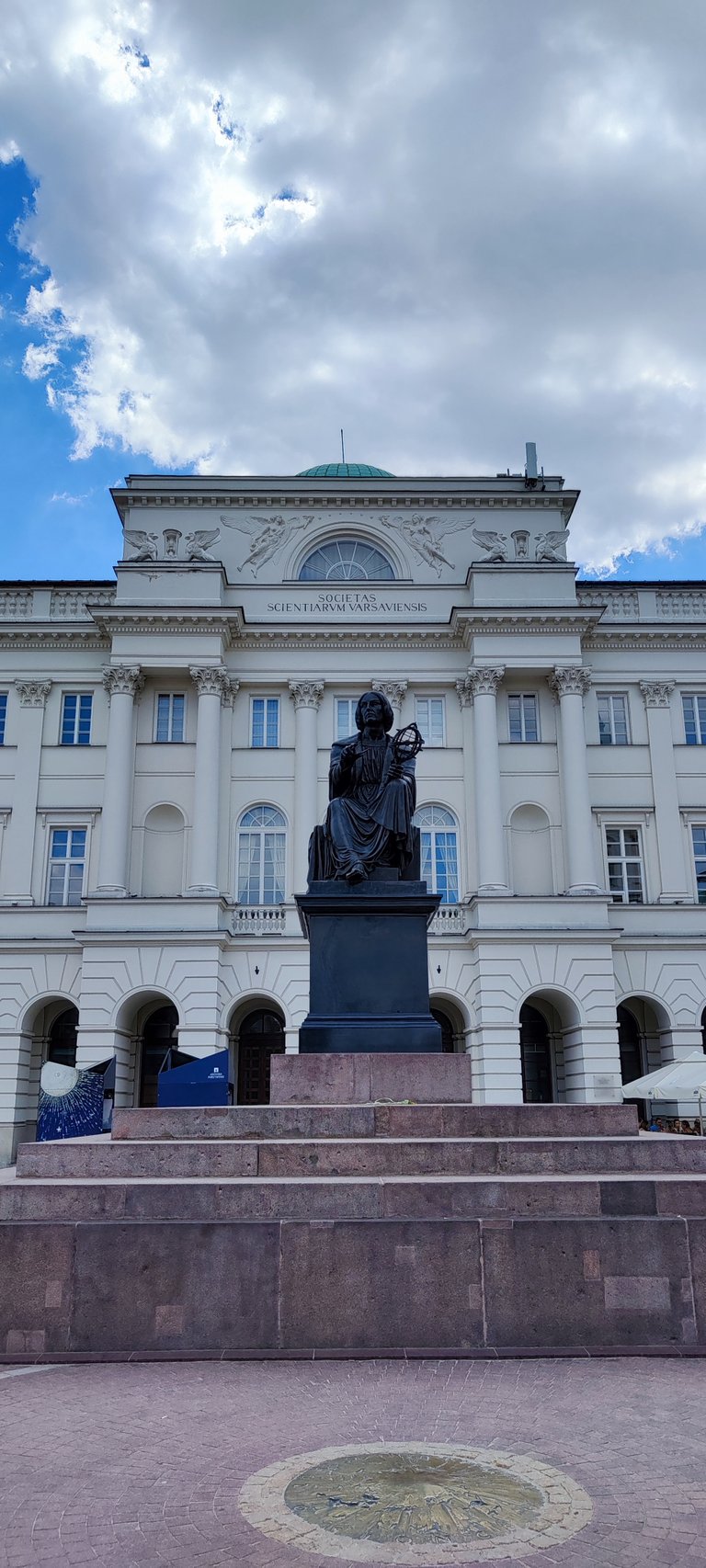
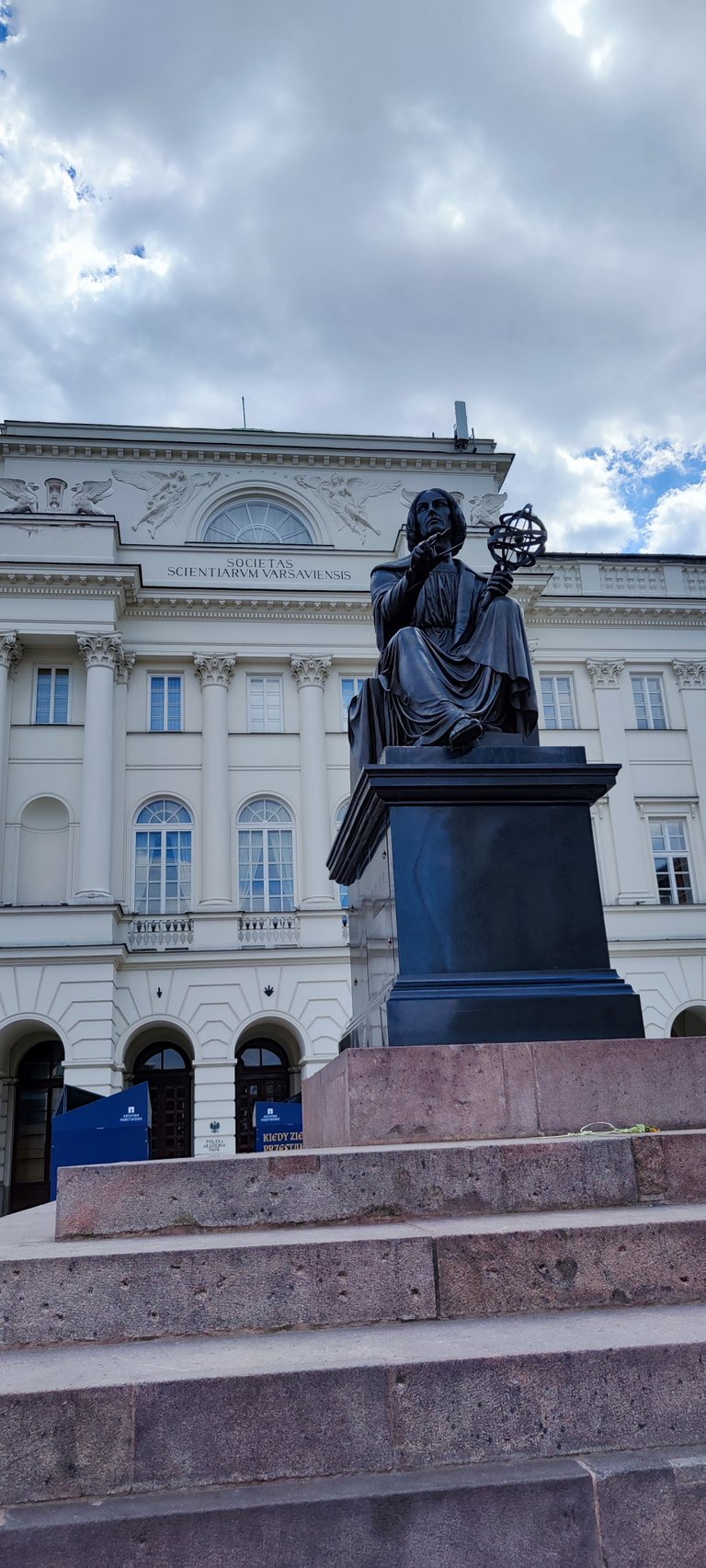

ENG:
"The exhibition prepared by the network of state archives in Poland on the occasion of the 550th anniversary of the birth of Nicolaus Copernicus. The exhibition presents priceless, largely little-known archives concerning the astronomer's family members as well as monuments dedicated to him and Copernican anniversary celebrations. The exhibition brings visitors closer to the fate of Nicolaus Copernicus presents images of him unknown to the wider public and also illustrates how the figure of the astronomer was perceived throughout the intricate history of the Polish State and Nation."
PL:
"Wystawa przygotowana przez sieć archiwów państwowych w Polsce z okazji 550 rocznicy urodzin Mikołaja Kopernika. Ekspozycja prezentuje bezcenne w znacznej części mało znane archiwalia dotyczące astronoma członków jego rodziny jak również pomników jemu poświęconych i obchodów rocznictw kopernikańskich. Wystawa przybliża zwiedzający losy Mikołaja Kopernika prezentuje jego nieznane szerszemu ogłowi wizerunki a także obrazuje jak postać astronoma była postrzegana na przestrzeni zawiłych dziejów Państwa i Narodu Polskiego."
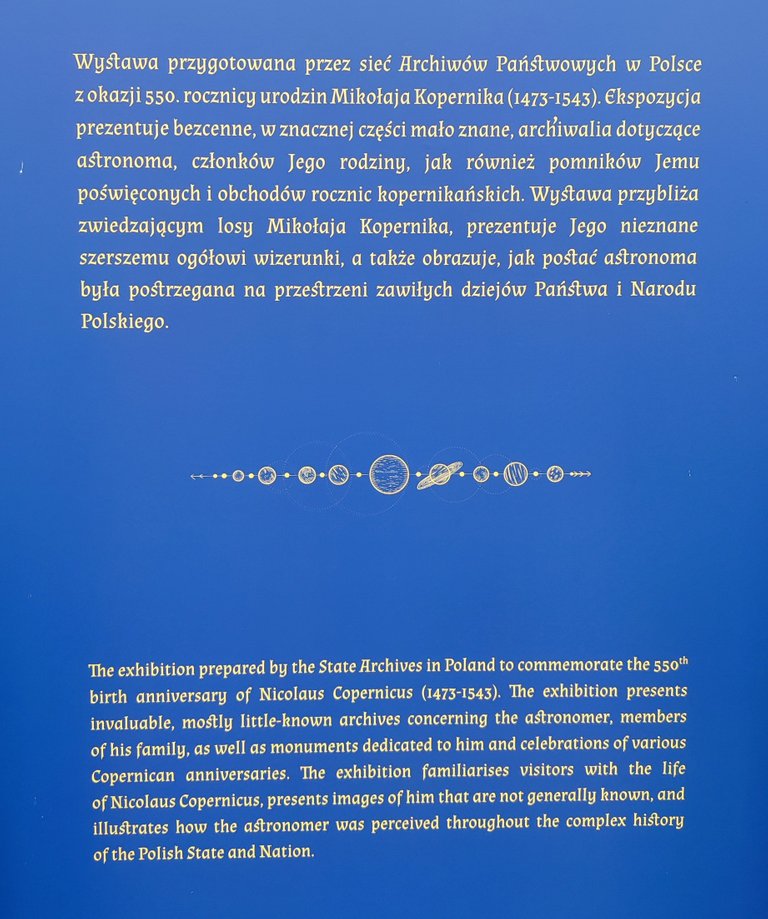
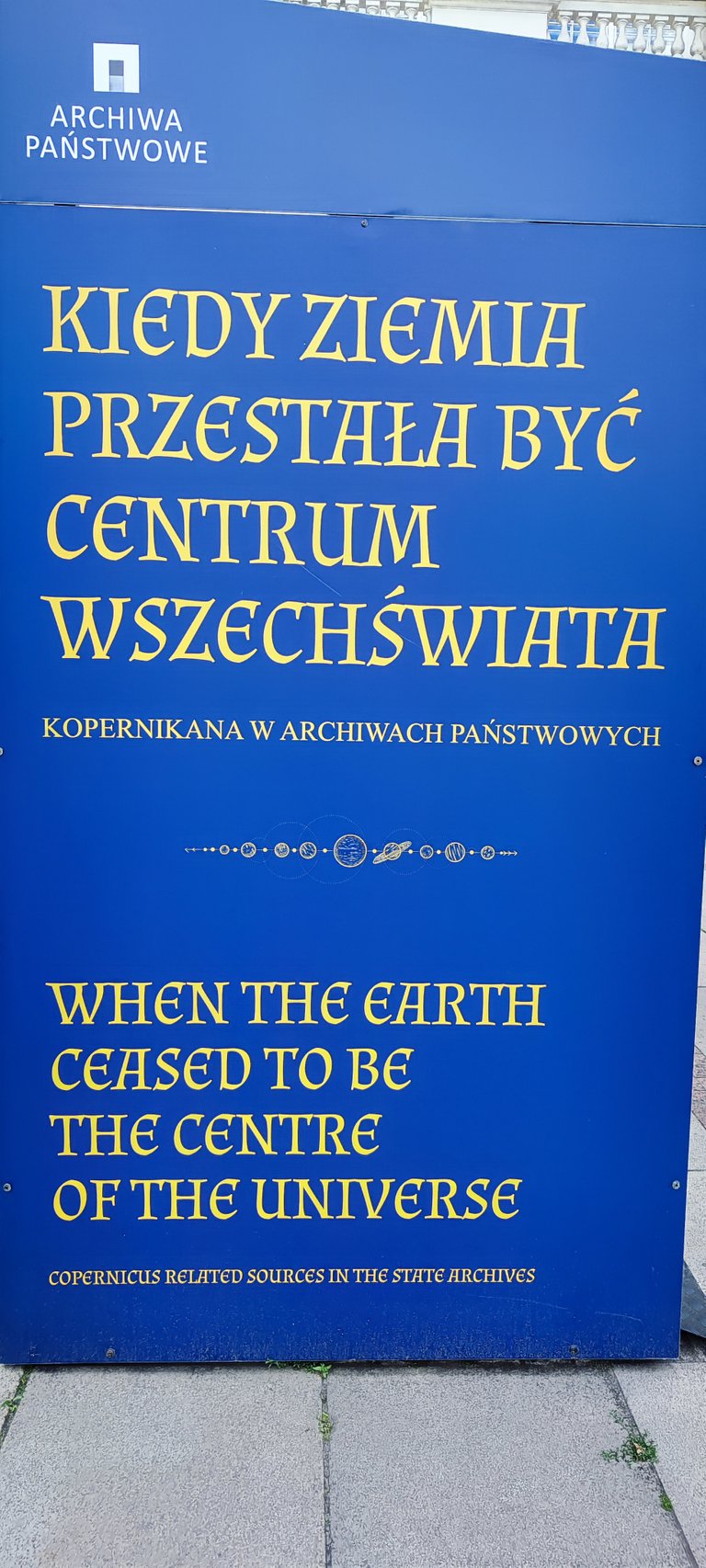

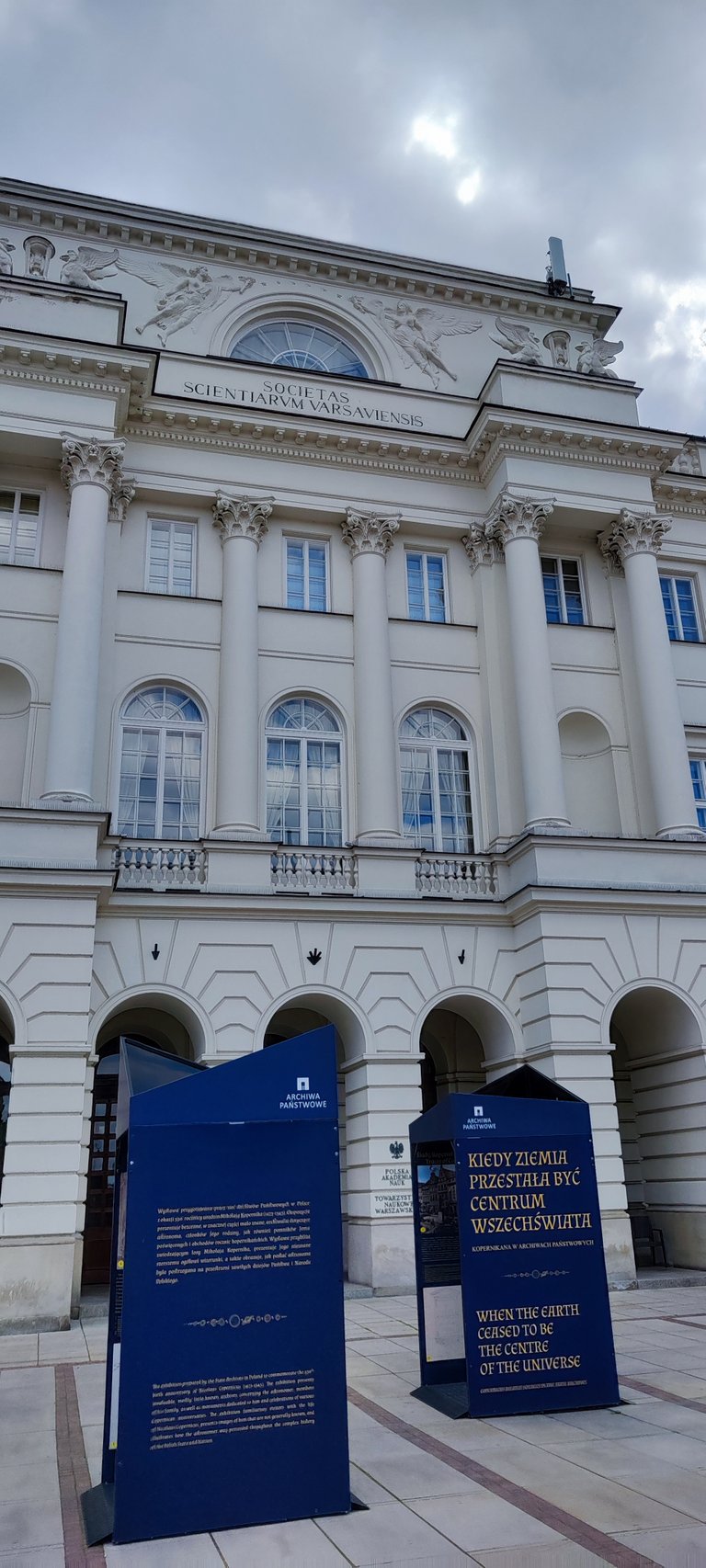
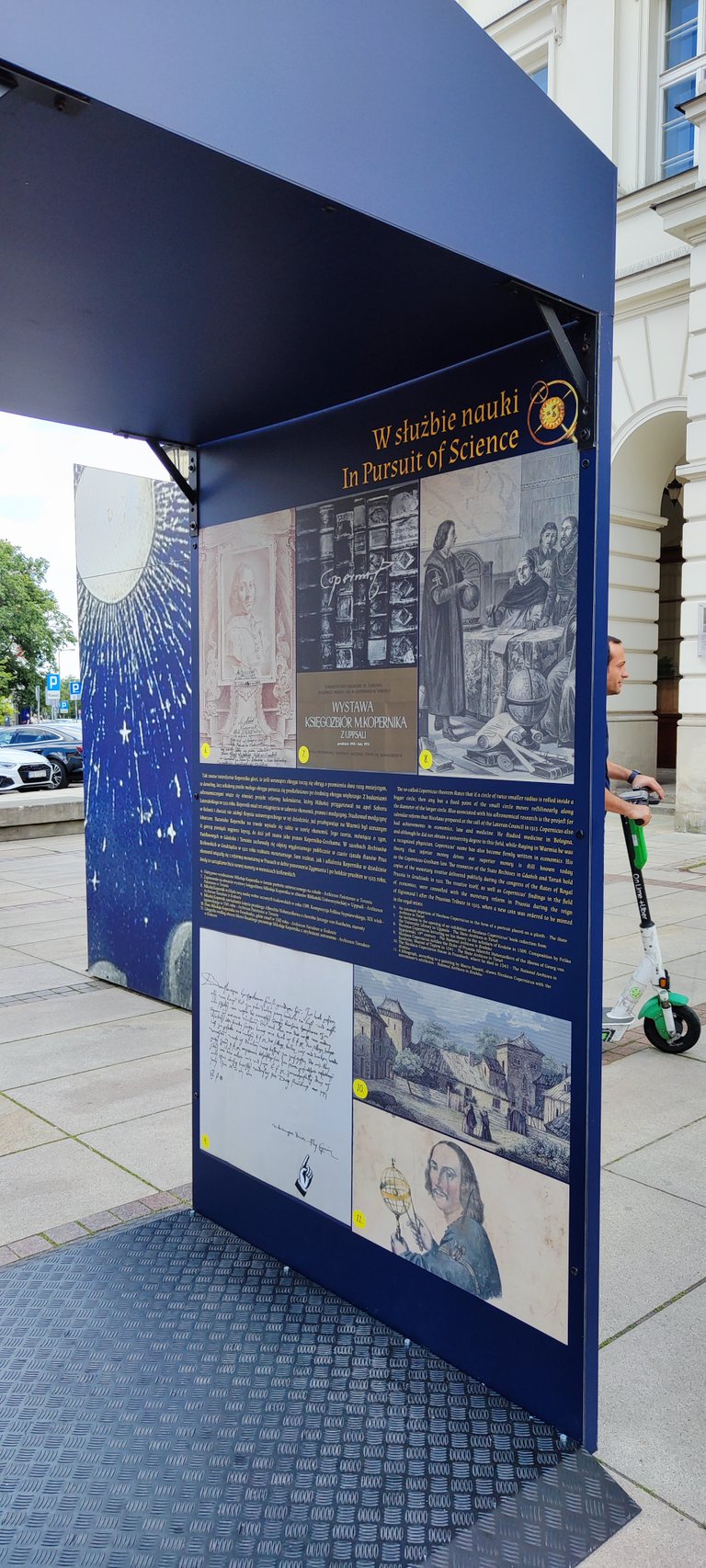
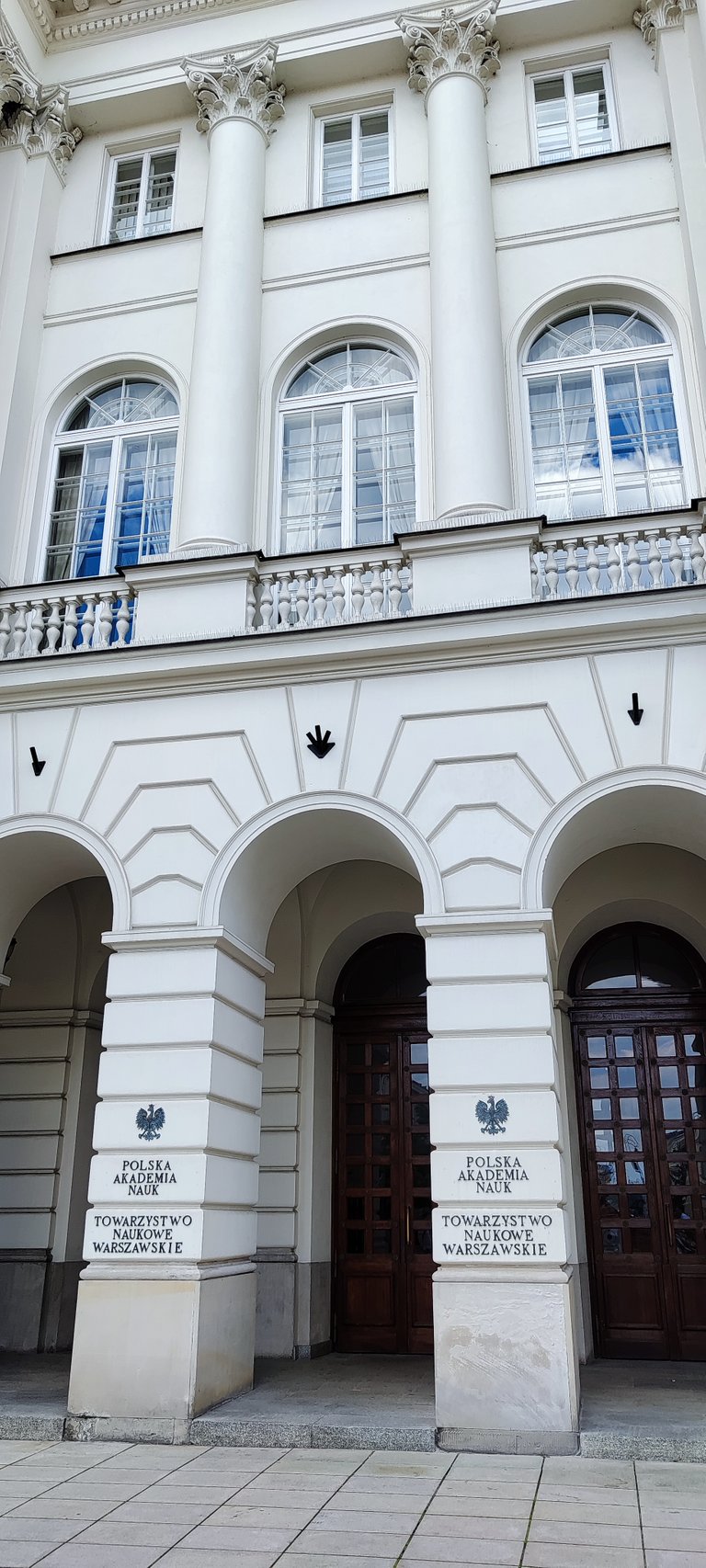
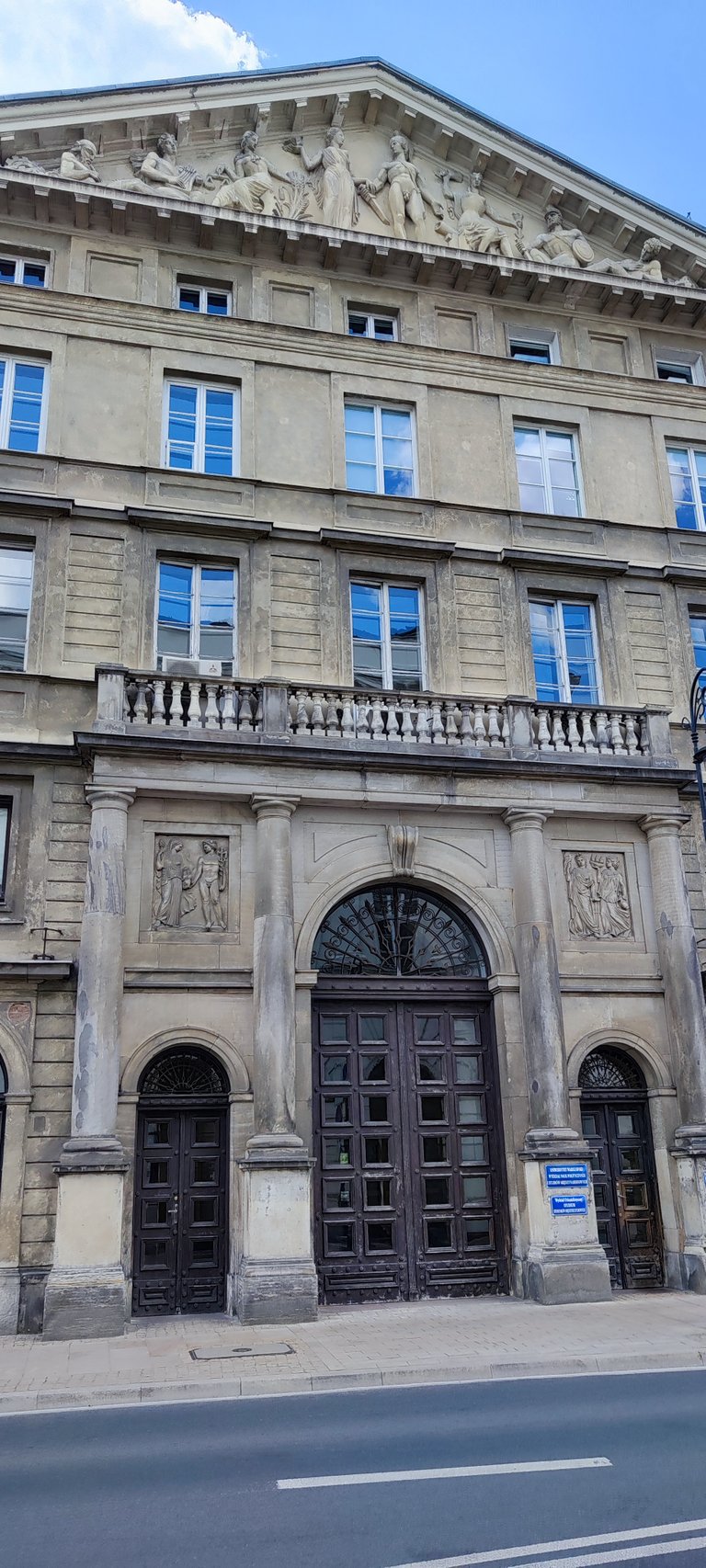
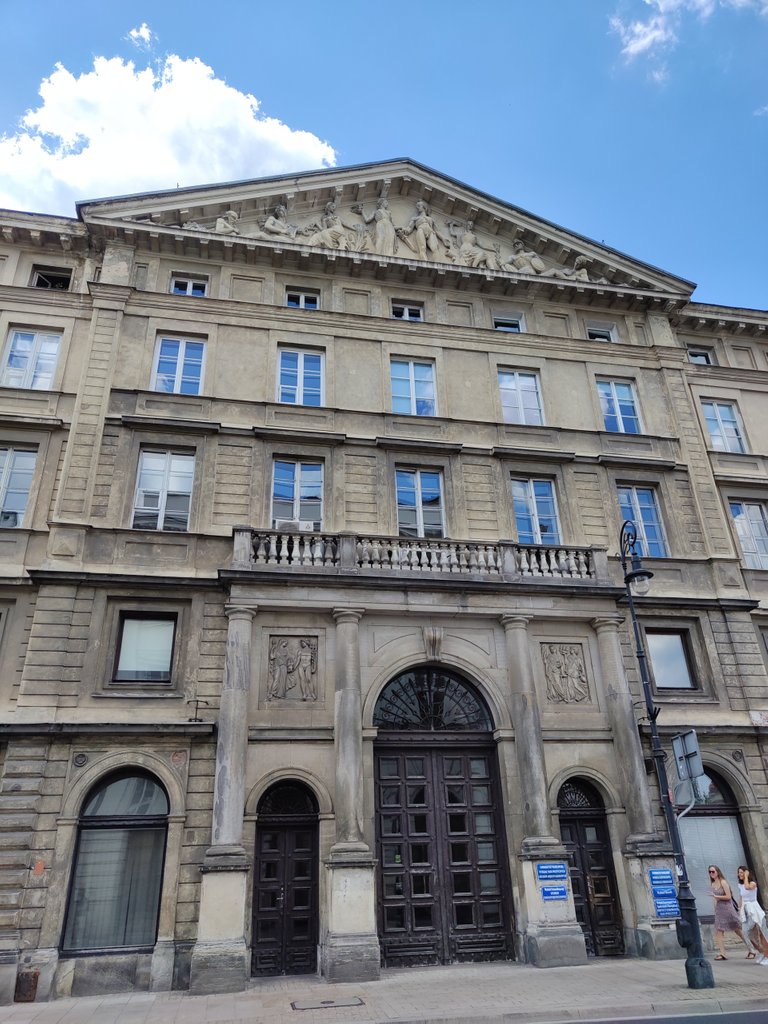
ENG:
Palace of Culture and Science
Palace of Culture and Science - was built between 1952 and 1955. It is the second tallest building in Poland and is located in downtown Warsaw. It is the seat of the Warsaw City Council.
PL:
Pałac Kultury i Nauki
Pałac Kultury i Nauki – został wybudowany w latach 1952 – 1955. Jest drugim co do wysokości budynkiem w Polsce znajduje się w śródmieściu Warszawy. Jest siedzibą Rady miasta Warszawy.
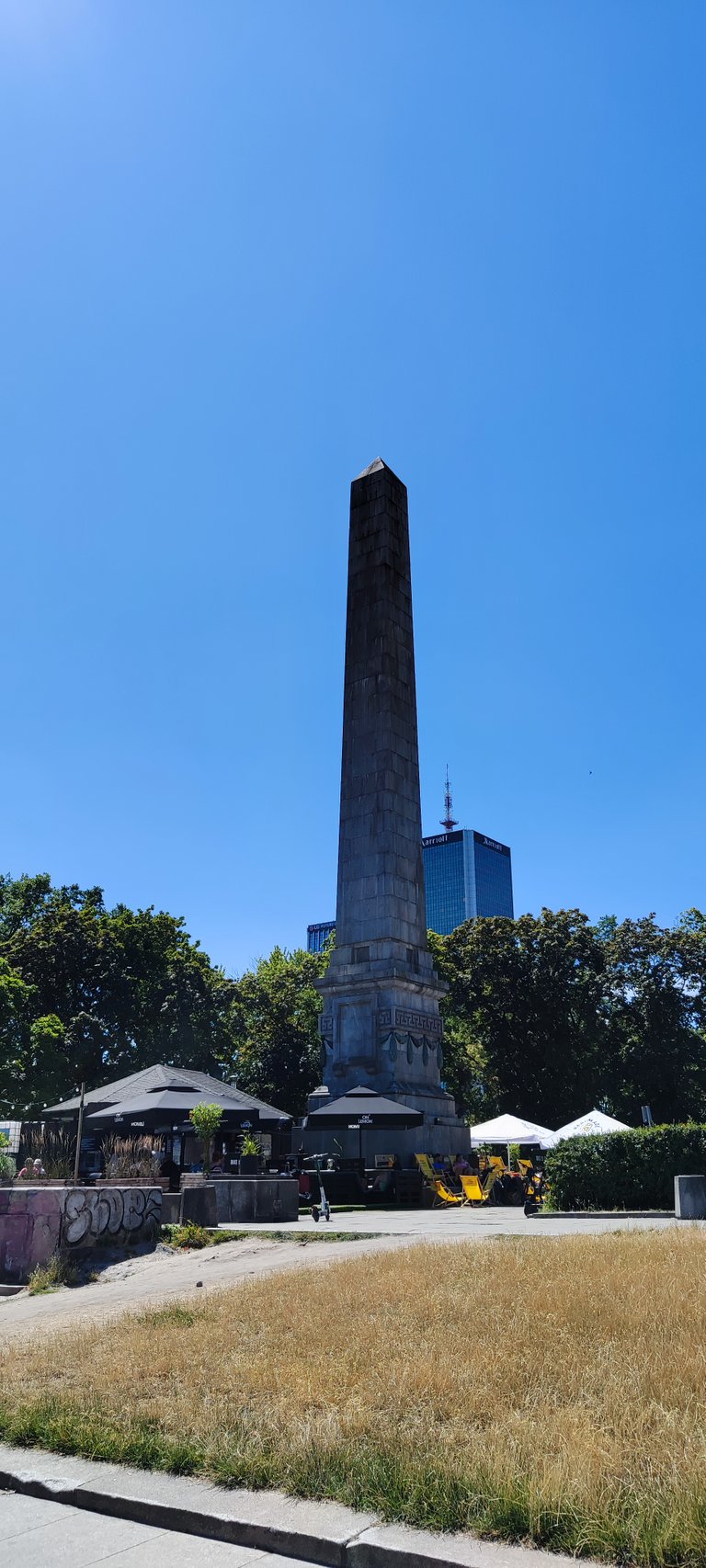
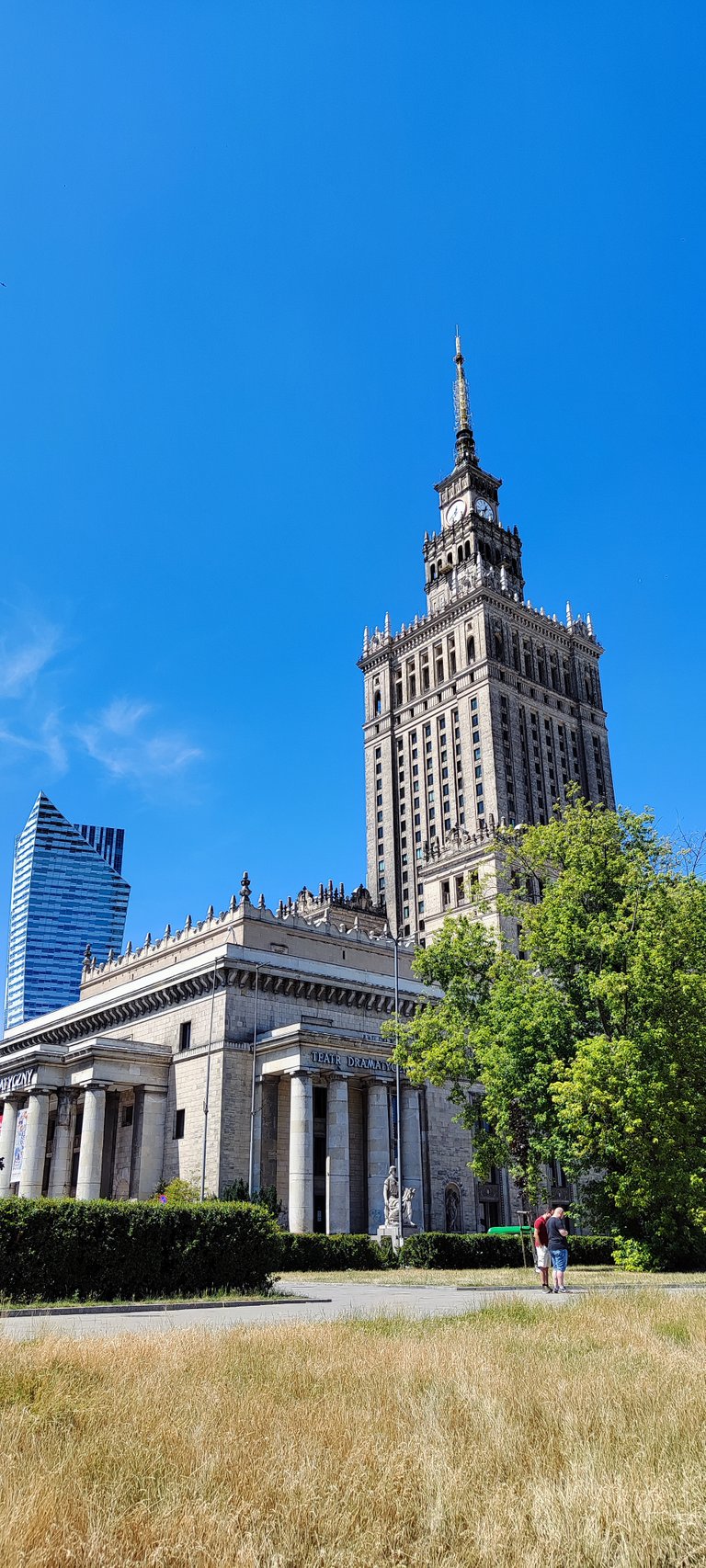
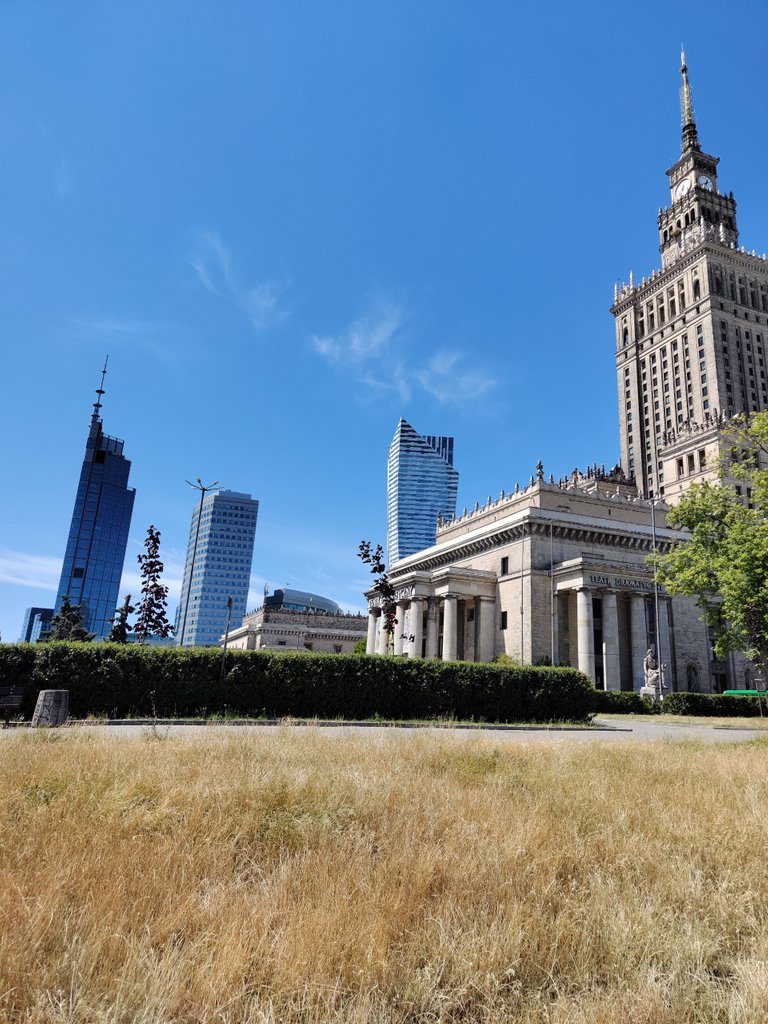
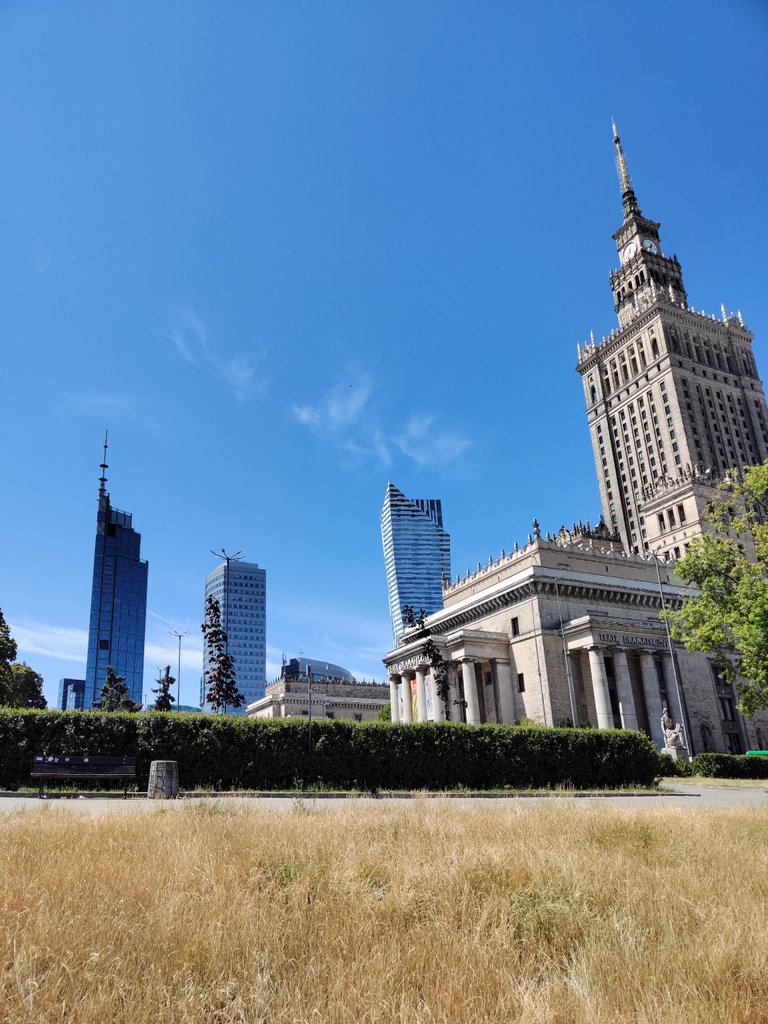
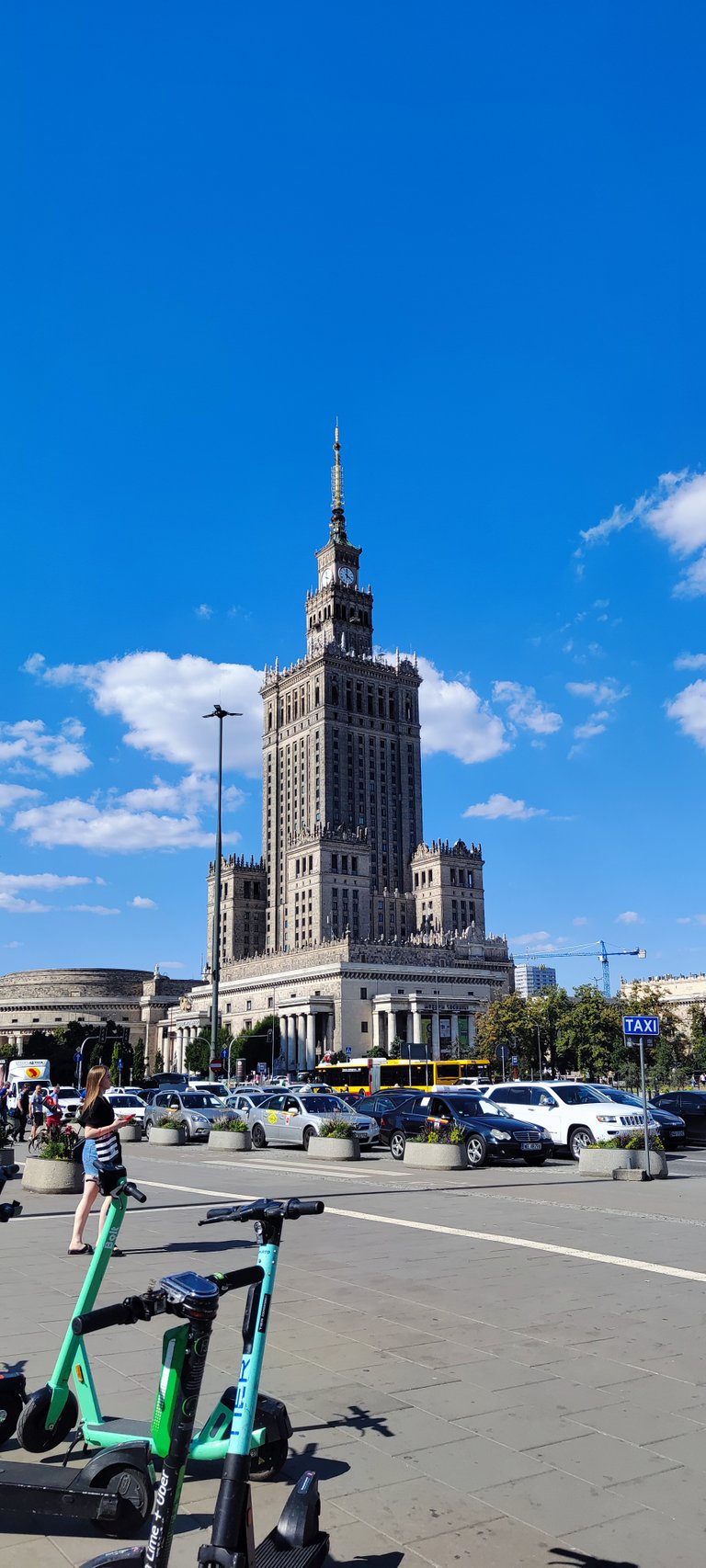
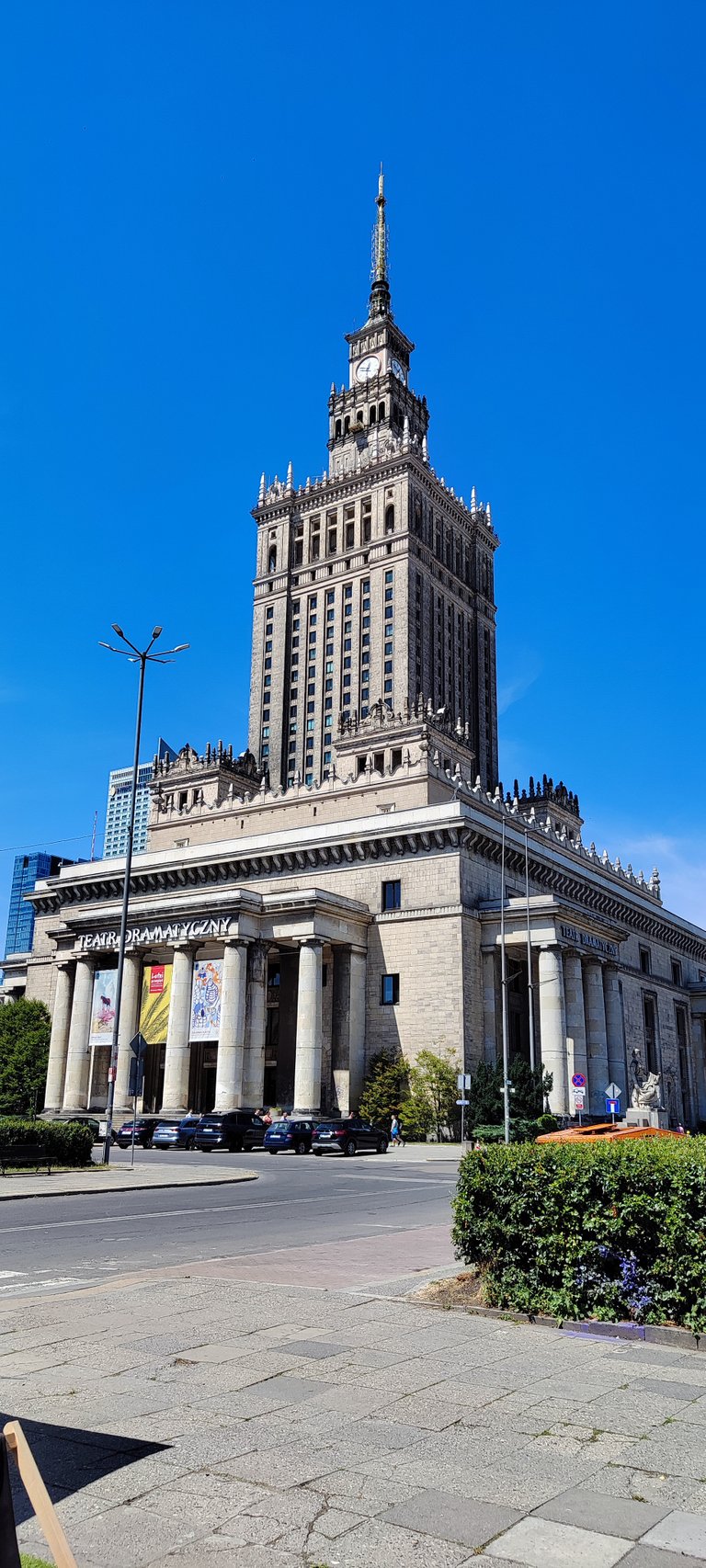
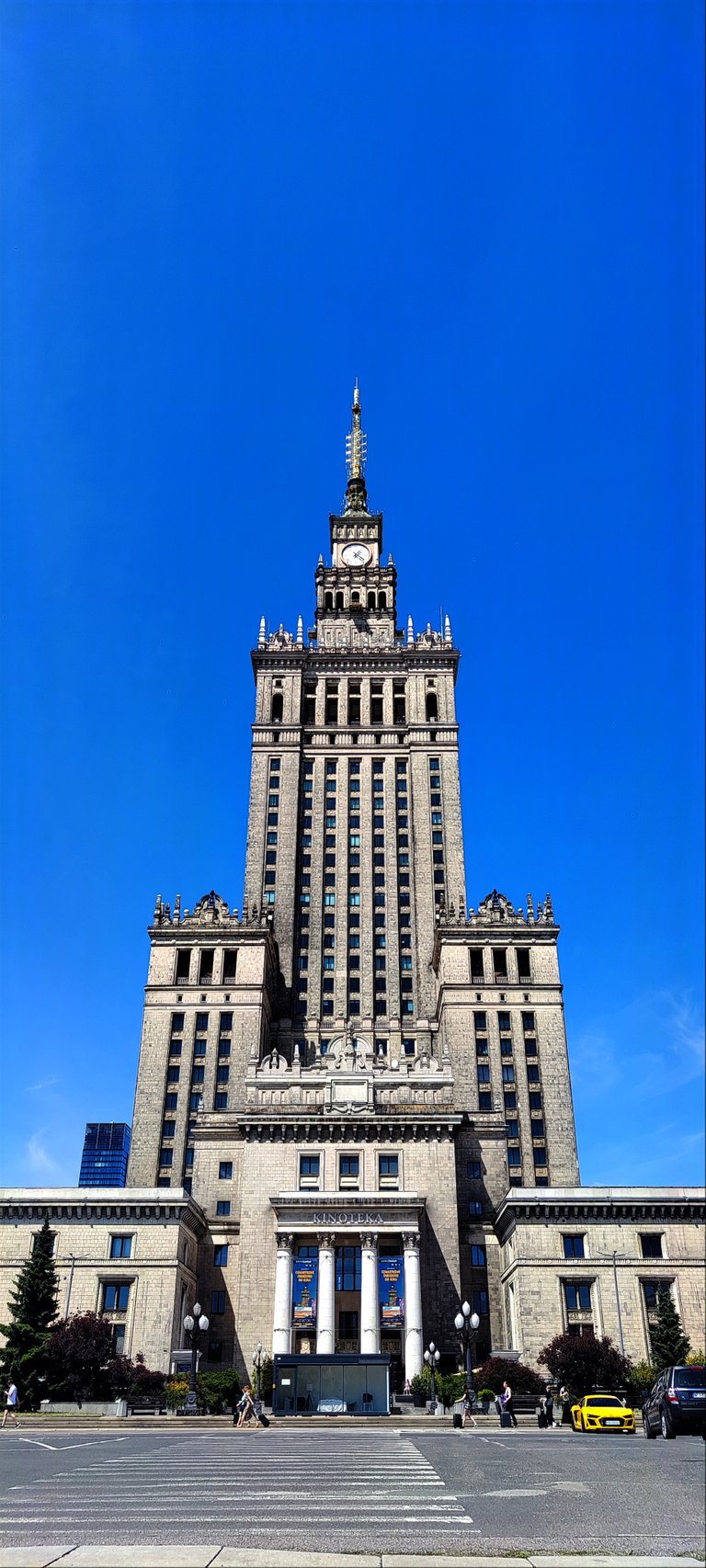
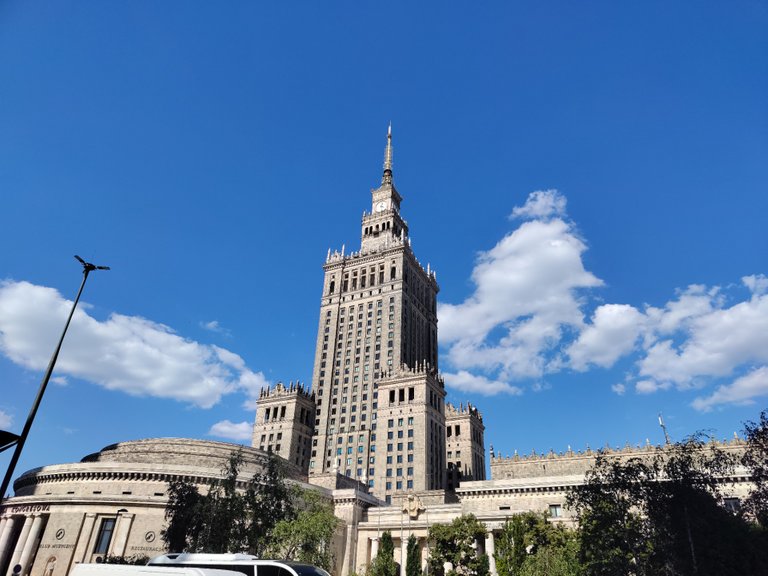

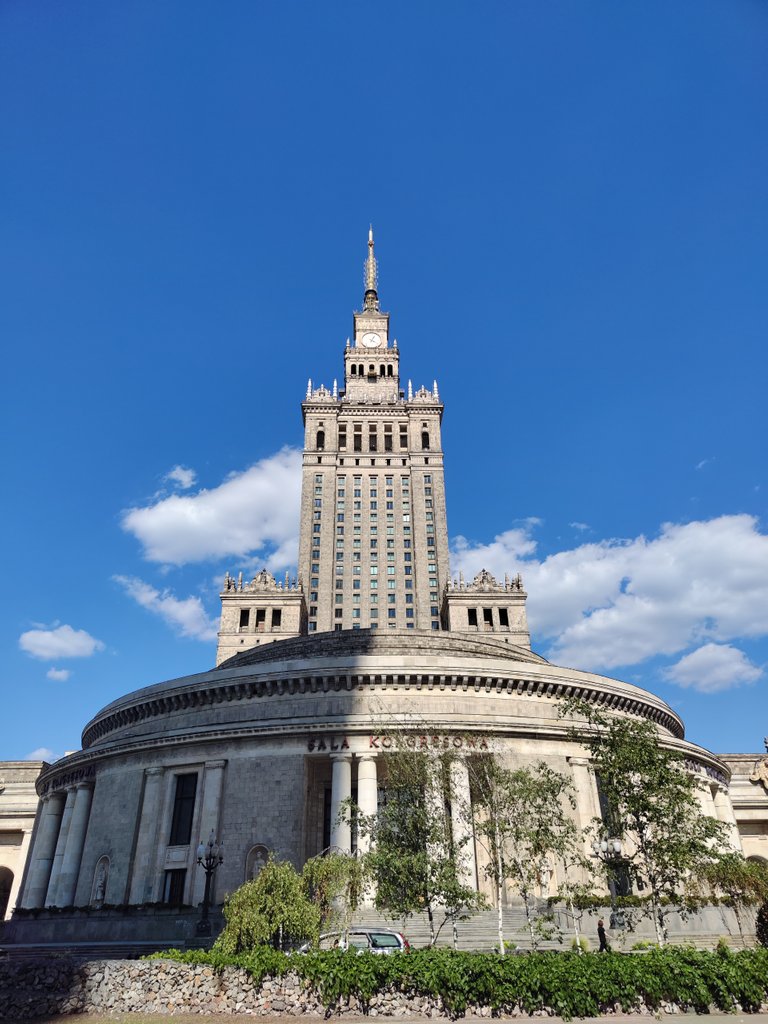
//:# (!pinmapple 52.23273 lat 21.00630 long d3scr)


